

26
University of Central Florida ISSUE
| SPRING ‘24
UNIVERSITY OF FLORIDA
EDITOR-IN-CHIEF Loryn Smith
MANAGING EDITOR Aliza Ahmed
FINANCIAL DIRECTOR Marium Abdulhussein
LEAD COPY EDITOR Karen Zhang
COPY EDITORS Yeleeya Li • Justin Fernandez • Leila
Wickliffe • Sabrina LaVopa
DESIGN EDITORS Elyza Navarro
Kate Lynne Pudpud
Madison Edwards
PHOTO EDITOR Refat Roja
PR DIRECTORS Michi Tang
WRITERS Abby Renger
• Mahima Kedlaya

• Kat Tran
• Ellie Uchida-Prebor
• Aize Hassan
• Ananya Pradhan
• Maria Juliana Tady
• Morgan Hurd
• Naomi Patel
• Sienna Chien
DESIGNERS Ceyan Ang
UNIVERSITY OF SOUTH FLORIDA
EDITOR-IN-CHIEF Amy Pham
MANAGING EDITOR Rohit Veligeti
FINANCIAL DIRECTOR Fariah Ansari
CONTENT EDITOR Quyen Tranh
DESIGN EDITOR Amreen Naveen
PHOTO EDITOR Kaniz Angel
PR DIRECTOR Ishita Sen
PROGRAMMING EDITOR Yasaswi Nimmagadda
WRITERS Aditi Ragothaman
Gade
Singh
• Zainab Nawaz
• Divya Somayaji
• Jackie Truong
• Jennifer Jia
• Joy Chen
• Maya Rudo
• Shiyin Hong
• Skylar Rosario
• Tina Mei
PHOTOGRAPHERS Andrea Sison
• Christina Nguyen
• Eddy Chen
• Zarin Ismail
• Anushka Raviprasad
• Haley Desai
• Julia Lin
• Leanne Lucas
• Rayvin Velasco
PR STAFF Brian Paz
• Cathleen Valenzuela
• Colin Strom
• Emma Salcedo
• Isana Schroder
• Maika Huynh
• Nam Tran
COVER
PHOTO Liana Progar & Norah Layne DESIGN Liana Progar
MODELS Takuya Avvampato • Bea Baldonado • Ava
Dennison • Caitlyn Mari Koerner • Abbey Miller •
Kathryn Powell
FOLLOW US ON SOCIAL MEDIA
FACEBOOK Sparks at the University of Central Florida
INSTAGRAM @ucf_sparks_mag
TWITTER @ucf_sparks_mag
sparks-mag.com
• Deeksha Sridher
• Nimrit Doad
• Alphy Maria Antony
• Merita Mary Thomas
• Ramya Subramanian
• Sanjana Nallapati
• Serena Bhaskar
• Anushri
• Mridula
• Reagan Huynh
• Vaidehi Persad
• Shriya Punati
• Ly Vu
DESIGNERS Daniela Kate Abaquita
Mary Thomas
• Khoi Vu
• Dat Pham
• Riya Choksi
• Merita
• Sayuri Gautam
• Shifa Shaikh
• Smyrna Davalath
PHOTOGRAPHERS Jayce Jiang
• Khoa Hoang
NATIONAL BOARD
EXECUTIVE DIRECTOR Jason Liu
OPERATIONS DIRECTOR Mercy Tsay
CHAPTER DEVELOPMENT DIRECTOR Aleem Waris
MARKETING DIRECTOR Sally Zhu
CHAPTER DEVELOPMENT DIRECTOR Samia Alamgir
SENIOR GRAPHIC DESIGNER Esther Zhan
CHAPTER MANAGER Samia Alamgir
WEB DEVELOPER Chris Tam
•
•
2 | SPRING 2024
UNIVERSITY OF CENTRAL FLORIDA
E-BOARD


EDITOR-IN-CHIEF Liana Progar • MANAGING EDITOR Norah Layne
G-BOARD



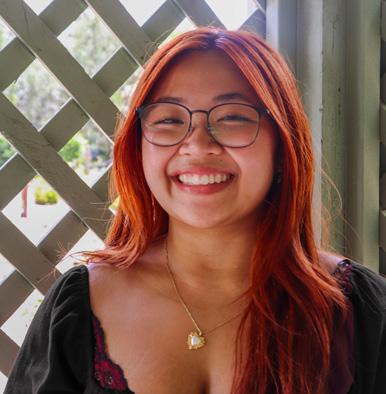

COPY EDITOR Jolina Jassal & Medha Medicherla • DESIGN PR MANAGER Jaimie To • EVENTS PR MANAGER
Kaylee Duong • LEAD DESIGNER Maliha Versi • LEAD PHOTOGRAPHER Liana Progar & Norah Layne •
WEB DESIGNER Jolina Jassal
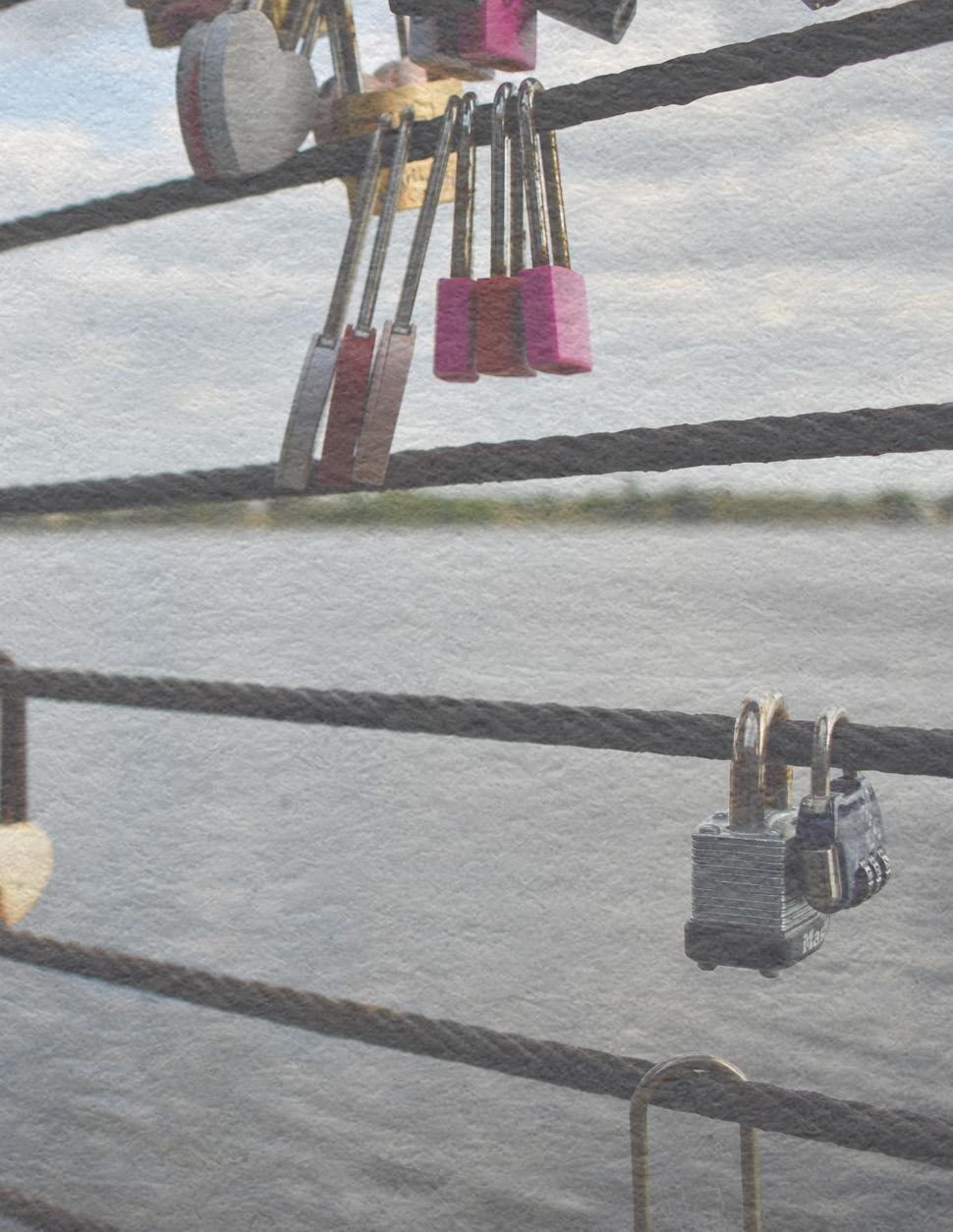
STAFF
WRITERS Anonymous Advocate • Teresina Follone • Jenna Ho • Ibrahim Itani • Jolina Jassal • Sami Nandam • Liana Progar • Monique Toon
DESIGNERS Asma Ahmed • Arianna Flores • Medha Medicherla • Alyssa Mugavero • Khadija Nemazie • Liana Progar
• Manaal Sheikh • Maliha Versi
PHOTOGRAPHERS Ryan Baez • Jenna Ho • Olivia Kondraschow • Norah Layne • Liana Progar
PR STAFF Asma Ahmed • Kaylee Duong • Teresina Follone • Jenna Ho • Sami Nandam • Breanna Pham • Jaimie To
MODELS Takuya Avvampato • Bea Baldonado • Ava Dennison • Caitlyn Mari Koerner • Abbey Miller • Caitlin Nguyen • Courtney Nguyen • Kathryn Powell
SPRING 2024 | 3

A LETTER FROM THE EDITOR
DEAR READERS,
This semester, this year, has been a wild ride. Sparks Magazine faced many big changes, countless road blocks, yet we persevered. Unfortunately we were unable to publish Issue 25 in Fall 2023, so this is a combined Issue 25 and 26. But with this set back, it allowed us to regroup and rethink what we wanted out of this issue, what was important to share. Instead of rushing, we were given more time to elevate and expand on our ideas. As a result, I’m proud to say we are publishing one of our largest issues to date.
In this past school year, we have witnessed many horrors and atrocities at home and abroad. And although the world seems to be in constant ruin around us 24/7, Sparks Magazine has tried to balance the darkness with light in this issue. It is important to understand the world around us and be informed, but at the same time it’s also necessary to take care of yourself and your mental health, to stop

doom scrolling and see the small seeds of hope in the world. Through grit and determination, our staff members overcame their many hurdles. They have come together to create an issue that educates and explores new ideas and lands.
Issue 26 features heavy, relevant issues such as the ongoing genocide in Palestine and cultural appropriation, balancing the tougher issues with lighter pieces like a heartfelt love letter to the Orlando Asian community and the exploration of various Asian makeup styles. This issue covers local topics, but also reaches to the other side of the world. The Sparks Magazine staff worked tirelessly to delve into subjects that matter to our community locally and around the globe. In each article, there are opportunities to grow and learn, even among the hardships we face.
Just as in life, the semester contained lightness and darkness, happiness and sadness, yin and yang. As people we must live through the hard times as well as the joyful times, for without misery there is no beauty. Sparks’s staff members have learned this lesson, figuring out when to take a step back and when to charge forward with all their might. This issue was not made without struggle or hardship, but it was also not made without prosperity and delight. As a team, we have grown closer, learned how to balance ourselves and embrace all the world has to offer.
As I end my last semester with Sparks Magazine, it’s hard to say goodbye. Having been a part of Sparks since my freshman year, I have learned many valuable lessons and made even better friends. And all I can hope for, is for this issue to reach the audience that so deserves it. I hope this issue brings a smile to your face and a tear to your eye. In the end, I hope you too find a way to balance both the lightness and darkness in your life.

SINCERELY,
LIANA PROGAR EDITOR-IN-CHIEF 4 | SPRING 2024

TABLE OF CONTENTS VIRTUAL VOYAGE SAMI NANDAM DIVERSITY OR DOOM? JOLINA JASSAL A DIFFERENT CANVAS MONIQUE TOON KEEPING UP WITH KALI SAMI NANDAM PROVING THEM WRONG <3 LIANA PROGAR BECOME AN ASIAN GRANDMA TODAY! REAGAN HUYNH A NEW LOOK ON THE PALESTINIAN-ISRAELI CRISIS ANONYMOUS ADVOCATE THE MIND OF MIYAZAKI JOLINA JASSAL MY LOVE LETTER TO THE ORLANDO ASIAN COMMUNITY JENNA HO CHIC & COVERED: MODESTY IN FASHION ANONYMOUS ADVOCATE SEOUL SEEKER LIANA PROGAR MAKING OF ISSUE 26 SPARKS MAGAZINE STAFF 08 SPRING 2024 | 5 10 13 14 18 20 25 28 30 32 38

6 | SPRING 2024
by Sami Nandam design/Manaal Sheikh
Without a passport or a suitcase, I am able to traverse the globe in the new digital era. A few clicks and keystrokes and I am at the entrance to a sacred area that is steeped in culture and history. In an age of technology, we are able to travel thousands of miles away without leaving the comfort of our homes. A hundred years ago, this was not possible. I chose to take this possibility to embark on a cyberspace journey to the Kamakhya Temple in Assam, India.
The goddess Kamakhya is the embodiment of feminine energy and menstruation. According to the myth, a Hindu god, Lord Shiva, performed a cosmic dance after his wife, Sati died. Sati’s reproductive organs (yoni) fell in the place where the temple was built. The yoni developed into the goddess Kamakhaya, which is who the temple is dedicated to.
Instead of Googling flight prices to India, I simply typed in “Kamakhya Temple” into the search bar of Google Earth. With one tap, I went across the globe to the other side of the world: Guwahati, Assam. As I first “landed” at the steps of the temple, the first thing that caught my eye was the overall simplicity of the temple. A lot of Hindu temples are very adorned and intricate. The simplicity to me indicated that the meaning of the temple is rooted in more of its purpose. With the slight movement of my mouse, I was able to move closer to the temple. There, I noticed there were female figures on the side of the temple. The use of female figures added to the feminine energy of the temple. I was eager to go inside the temple since the outside was slightly unadorned. However, I was not able to go inside the temple due to the temple’s restriction on videos or cameras. I decided to look up images on Google, and what was interesting was that there is no idol statue inside the temple. Most Hindu temples have large idols that are decorated beautifully, but Kamakhya does not. There is simply a stone where people
believe Kamakhya resides. As mentioned before, this stone is the yoni.
Returning back outside the temple, I had to return to the bird’s eye view each time I wanted to go somewhere. This small problem made it harder to see the temple at its full capacity. One aspect of the temple that stood out to me, as I was exploring, was the use of warm-toned colors such as oranges, reds and beiges. Such warm colors added to the menstruation theme that surrounds the goddess. As I saw the various angles, the structure was distinctive in comparison to other temples. Most Indian temples are pointed at the top. However, Kamakhya is dome-shaped with soft and rounded edges. With nowhere else to visit inside the temple, I voyaged back home and saw the globe rotate in front of me.
Overall, I think using Google Earth to visit cultural sites is beneficial. However, a lot of the time, there is a lack of understanding when virtually visiting the sites because there is no history or meaning presented at the site at hand. In that scenario, technology can negatively influence our understanding of the sites because there is no appreciation or deeper learning. On the other hand, if you virtually visit a site with background knowledge on it, then technology can provide a beautiful experience. When I “visited” the Kamakhya Temple, I learned some of its history and significance beforehand. Therefore, I was able to have a much deeper appreciation upon seeing it virtually. Technology, like Google Earth, can inspire you to learn more about cultural sites. It allows you to research more about topics in Asian culture which allows their values and beliefs to be spread through a wider population.
Visiting the Kamakhya Temple virtually was a unique experience. From the lack of idols to the structure, it was a gratifying way to expand my horizons from the comfort of my room. What will your virtual venture be?
SPRING 2024 | 7

Cultural Appropriation in the Novel "Yellowface" Diversity or Doom?
Thankfully, the 21st century has been more kind and embracing to the various cultures that are featured around the globe. Especially in the world of media, specifically books, there has never been a more diverse and welcoming catalog of content to consume. Tons of novels and fictional works are being created by those who are from underrepresented backgrounds. One of these creators is Rebecca F. Kuang, a Chinese American author who has written numerous bestsellers, including “Babel,” “The Poppy War" series, and most recently, “Yellowface”. With her latest work, she has managed to explore the modern reception of diversity, and how people can use it ignorantly or maliciously.
“Yellowface” details the path of a young white author named June Hayward. After witnessing the death of her more successful colleague and friend, Chinese American author Athena Liu, she manages to get a hold of one of Liu’s unfinished manuscripts. Initially wanting to publish it in her friend’s memory, she ends up publishing the work as her own, along with rebranding herself as Juniper Song and appearing ethnically ambiguous with her author photo. Throughout the novel, we witness the backlash that she receives from her cultural appropriation, both online and in person, reading into her thoughts that constantly try to justify her actions.
With these things in mind, some people may ask: what is cultural appropriation? Looking at the Britannica definition of the term, cultural appropriation is, “when members of a majority group adopt cultural elements of a minority group in an exploitative, disrespectful, or stereotypical way.” This can include wearing cultural garments as a simple Halloween costume or adopting certain practices and traditions not related to your culture as an aesthetic or for social gain.
While the book is supposed to be a satire exposing the publishing industry, it does make the average reader wonder about the state of cultural appropriation today. Does it still hold an active presence in our society, and what is considered cultural appropriation in media? With the promises of diversification being delivered, are they done with the right intentions? Analyzing the novel further, we will delve into these questions to understand the state of diversity and representation in the modern age.
At a glance, many readers had their interesting thoughts on the book. Receiving a 3.89 out of 5 stars on Goodreads, “Yellowface” has been generally well-received. “I think the book overall did a good job exposing the inner workings
of the publishing world as well as the struggles many aspiring authors may encounter,” said Stuart Avvampato, one of the many readers of this book. “I loved ‘Yellowface!’ I think it’s a novel that might rub people the wrong way, but I saw it as a book to (lightheartedly) make fun of the book community,” said Sydney Sedloff, another reader. She has a point, as some people do not enjoy certain aspects. Cindy Pham, an online creator who is infamous for her book and movie reviews, had differing opinions. In her video, “The problem with ‘Yellowface’ by RF Kuang: my thoughts on race, class, and the publishing industry,” she summarizes her thoughts on the book. “Yellowface felt very chronically online rather than reflective of the real-life publishing industry,” she said, highlighting the numerous references to Twitter and the online discourse in the novel.
Before delving into appropriation, an interesting point to tackle first is diversity, especially in the entertainment world today. While we have seen better representation in media in recent years, it is still a controversial issue on both sides, especially with the idea of using certain people as “tokens,” to show that they “care” about minority voices without actually putting in effort to diversify the field. “I think that there definitely is a push to hire or secure a handful of ‘token races’ in order to play into the market where there are demographics that would desire that. And although I believe diversity hires could be helpful, I don’t think that the way that media industries today are handling it [is] being carried out in a beneficial way. Instead of being merit-based in its hiring process and allowing for smaller actors/writers/etc to enter the limelight, it seems as though a lot of media industries… tend to try to secure the small handful of already successful/token figures to hire instead,” said Avvampato. Sedloff goes into further detail on the potential motivations behind these industries. “I don’t feel that the publishing houses and other companies are doing it out of the goodness of their hearts. They’re doing what June did. They realize that they can a lot of money by supporting minorities. They know if they don’t diversity, their income will suffer for it.” With powerhouses prioritizing money and their reputations, minority communities see these kinds of gestures as pandering and ingenuine, whereas many non-minority members, like June in the novel, feel as if these industries only care about minority voices and push theirs away. “There are white authors who still believe that publishing favors people of color and that white people are becoming more of a minority and they are the ones that are being marginalized from having their stories published…” Pham said regarding the publishing industry. However, she immediately debunks this claim by providing author
by Jolina Jassal
design/Arianna Flores
8 | SPRING 2024
demographic statistics from Wordsrated.com, which shows that roughly 75% of authors within the U.S. are white as of 2021. While minority percentages are growing, they are still heavily underrepresented, therefore throwing any opposing claims right into the garbage.
In terms of its dealing with cultural appropriation, there were mixed opinions and interpretations of its handling. While Avvampato found some accuracies in the novel compared to the real world, Sedloff stated that it wasn’t necessarily “black or white,” with a singular action not being appropriation but the entire process being appropriation. When trying to analyze this subject, it is not uncommon to see many people struggle with what’s considered cultural appropriation and what’s not. The author, R.F. Kuang, even added her thoughts on this matter when she was being interviewed by the New York Public Library, describing how formatting the book was intentional with the modern way we discuss this issue. “‘Yellowface,’ is an interesting contrast between style and content, because I’m trying to unpack all of these difficult questions about cultural appropriation and identity and the commodification of marginalization, but I’m using this style that’s sloppy and easy and reductive because that’s how discourse is on Twitter,” she said. “But I was trying to use this reductive mode of narrative to unpack something that should not be so easily reduced.” Especially with the way that we communicate today online, it is easy to jump to conclusions on certain controversies. While it can be capable of holding people accountable, it can be harsh, and false accusations can easily stir in the air. It certainly doesn’t help those who are confused about the limits of cultural appropriation. Even with solid definitions, interpretations of specific instances can vary from one person to the next. However, the ultimate determiner of cultural appropriation is whether something is being used with genuine respect for the culture.
who are part of the majority writing minority characters. However, the main consensus was that as long as proper research and care go into accurate representation, it’s possible and acceptable. “Authors are absolutely capable of accurately portraying minorities correctly. The same thing happens with mental health struggles, class/wage differences, gender differences, etc. What is required of those authors though is more research,” said Sedloff. “I do believe that these authors are in fact capable of accurately and appropriately portraying these topics. I believe the hurdle would be higher for these individuals due to the subtle nuances that would be hard to portray without being of that culture/minority demographic, but I do believe that it is possible,” said Avvampato. There are numerous examples where authors succeed and fail in this venture, such as Lisa See winning numerous awards for novels like “China Dolls,” and “Shanghai Girls,” and only being ⅛ Chinese from her great grandfather’s side, and there’s Naomi Novik with her novel “A Deadly Education,” which had controversial portrayals of minorities, mainly involving fantastical world-building aspects that highlighted negative features. While this wasn’t her intention, the lack of care and awareness caused numerous communities to be offended.
"I don’t feel that the publishing houses and other companies are doing it out of the goodness of their hearts...They realize that they can [make] a lot of money by supporting minorities. They know if they don’t [support] diversity, their income will suffer for it."
- Sydney Sedloff
While tons of people in the novel were offended by June Hayward writing minority stories, readers had split thoughts on this topic, mainly when it comes to authors
Despite its praises and criticisms, “Yellowface” is a reflection of the progress and setbacks that we have made over the past few decades in media. While we have made great strides in diversity and representation in the media industry, we still have a long way to go before it is considered a truly safe space. Not only do companies need to prioritize diversity as a moral issue rather than a cash grab, but people also need to be educated on the signs of cultures being represented inaccurately. With constant jumping to conclusions and a lack of confidence in these sensitive issues, it is essential to put everyone on the same page. Putting in the work on both ends is essential to making actual progress toward cultural understanding and appreciation, not just in the media that we consume, but in our daily lives.


SPRING 2024 | 9
A Different Canvas
Eastern vs Western Makeup Styles
People express their creativity through a variety of ways— through paint on a canvas, words on a page, or even notes in a song. But for some, it’s through the stroke of a makeup brush.
The earliest records of makeup can be traced back to nearly 3000 BC and throughout time, different cultures have taken the foundations of makeup and have created their own styles. The distinction between Western and Asian styles of makeup is vast and grows more and more as years pass. Today, the Eurocentric beauty standard has been nudged to step aside, and now other cultures are having their turn in the spotlight. While these styles all may deviate from the beauty standards in the West, they’re each beautiful in their own way, catering to a nonEurocentric beauty standard.


Many Asian Americans feel torn in regards to their perception of beauty. For years, Eurocentric beauty standards have been heavily advertised and heavily featured on social media. Standards in the West aim for a tan, sunkissed glow, but Asian standards prefer lighter, pale features. Skinwhitening treatments are quite common in Asian beauty practices in an effort to appear as pure and youthful as possible. On the other hand, tanning treatments are extremely common in the West with individuals spending hundreds of dollars in an attempt to appear


With the rise of social media in the past decade, makeup tutorials and influencers have been able to grow in size, with tags like such as #kbeauty or #douyinmakeup garnering millions of posts across apps like TikTok or Instagram. Subcultures that thrived in small communities or specific countries have been able to grow and amass creatives all over the world, utilizing makeup in a new and innovative way. ***
One of the fastest growing phenomena is Douyin makeup, which has taken the makeup world by storm. Primarily sporting bright blush and glittery eyeshadow, Douyin style makeup gained its namesake by growing in popularity on Douyin, TikTok’s Chinese counterpart. Douyin makeup is mainly about enhancing natural features and lends more to the feminine, softer side of makeup. This style focuses on having an ethereal, doll-like complexion, with an emphasis on a lot of glitter. Douyin makeup favors a matte skin look, reinforcing the look of porcelain skin. In addition to this, another defining feature of this makeup style is the style of lashes. The lashes commonly used for Douyin makeup are referred to as


 by Monique Toon photography/Olivia Kondraschow and Ryan Baez design/Maliha Versi
by Monique Toon photography/Olivia Kondraschow and Ryan Baez design/Maliha Versi
10 | SPRING 2024

manhau style lashes. These lashes are more dramatic than lashes used in other Asian makeup styles, and primarily split into large clusters to enlarge the eyes.
It’s intriguing to note that Douyin makeup directly juxtaposes another makeup style that was popularized by TikTok. On the Western side, “clean girl makeup” has risen to popularity, where the aim is to look as natural as possible. Sunkissed skin, with a natural flush and naturallooking eyebrows, a nude lip, and minimal mascara.
The difference between the two can even be shown in the makeup products themseleves. The Western makeup sphere is dominated by minimalistic packaging and design, a parallel to the current standard of “clean girl makeup”. Meanwhile, in China, two popular makeup brands called Flower Knows and Florasis emphasize gorgeous, maximalist packaging, a stark contrast to what an average consumer in America can find in a Sephora.

Douyin makeup in its entirety is about utilizing methods and techniques to bring a fantasy to life. Douyin makeup is all about pushing the boundaries of makeup to make yourself look unreal, and about experimenting with the fantastical whimsy that makeup can create. ***
Crossing over the Yellow Sea to South Korea, where groundbreaking products are emerging into the international market at a high rate. South Korea is well known for their advanced beauty and self-care technology, with a heavy focus on skincare, and how it’s important to understand your own skin type. Many people forget that in order to achieve a flawless look, it’s not just about the makeup, but also the preparation beneath it.
Korean skincare has quickly risen up the ranks in the beauty industry, and as of recent years has even begun breaking into popular U.S. stores such as Ulta and Sephora. Some notable brands include Peach and Lily, Beauty of Joseon, and COSRX.
all depends on what you want to achieve for your skin. A typical routine would be as follows: an oil cleanser, then a gentle foaming cleanser, an exfoliator, toner, essence, treatments, eye cream, moisturizer and then SPF. Many people also have separate routines for morning and night and are generally some variation of the aforementioned routine.

In terms of actual makeup, Korean makeup tends to be more natural and subtle. Whilst Douyin makeup boasts a doll-like, porcelain effect, Korean makeup goes for more subtle eye looks. Makeup is softer and subdued, and many eye looks are inspired and popularized by idols. An example of this is Wonyoung from the K-Pop group IVE, who completely sold out the Rom&nd lip tint “Bare Grape’’ when news broke of her using it in many of her looks.
Korean makeup aims to enhance the natural features that are already there, and lend more towards the subtle and subdued look that is somewhat reminiscent of the West’s “clean girl makeup”, but with its own deviations. ***
On the other hand, Japan is well known for its vast amount of fashion subcultures, including lolita, gothic lolita, gyaru and decora just to name a few. Each subculture has its own distinct makeup style, catering to the subculture’s overall aesthetic.


A majority of these products market towards a specific beauty standard in Korea. One of the most popular trends for Korean makeup is called “glass skin.” Glass skin is the look of skin being dewy and glowy, mimicking the reflection of glass.
This look is achieved through innovative skin-care and revolutionary ingredients such as snail mucin. Achieving this look is heavily dependent on the products you use as well as

Skincare routines can range from just a few steps to over a dozen. It


SPRING 2024 | 11



bright or dark eyeshadow, pigments are lighter and more diffused, creating a softer, less harsh look.
Thai makeup aims to accentuate natural features, with a heavy emphasis on the subtlety of the eyes. With a nude lip and a primarily simple base, attention is drawn to the eyes that are contoured and lined to pop. While Douyin makeup favors fully diffused eyeliner, Thai eyeliner is sharp and only diffused at the top, creating a subtle smokey eye effect.

Gyaru, also the Japanese word for “gal”, refers to a subculture that aims to go against the norm. In a country where the beauty standard is pale skin and dark hair, gyaru directly opposes this. Featuring bronzed skin, heavy eyeliner, and large lashes, the looks aim to rebel in a beauty standard where subtlety and natural looks are favored. Similarly to Douyin makeup, gyaru makeup features bright blush and purposefully enlarges your eyes to seem more prominent and bold. Another definitive feature of gyaru makeup is applying white eyeliner along your lower lashline to give the appearance of larger eyes, a tactic also used in cosplay, another Japanese subculture.
Lolita on the other hand, is more along the lines of Douyin makeup, aiming to appear doll-like in nature. Circle lenses and large fake eyelashes are used to open up the eye and appear larger. That being said, while lolita makeup does have similar aspects to Douyin makeup, what differentiates the two is primarily the style of the eyeshadow and eyeliner. Eyeshadow and eyeliner are much bolder than Douyin makeup.
While there are many more subcultures of Japanese makeup to be explored, these are just a few of the more prominent ones with a distinct makeup style. Each subculture is unique in its own way and allows for a lot of creative expression.
Although paleness is still favored in Southeast Asian countries, the newer generation has slowly started to embrace their naturally bronzed skin and now aim for that sunkissed glow that’s heavily favored in the West.
Though Thai style makeup hasn’t gained as much notoriety as Douyin or Korean style makeup, it’s gorgeous in its own way. It embraces natural beauty in a style that differs from its counterparts but still captures the essence of its Asian roots.
***
Though there are many deviations, at the end of the day, makeup is about self-expression. After all, beauty is in the eye of the beholder. There’s no right or wrong way to do makeup, it’s all about what you want to achieve with your looks and what makes you happy. Makeup is art and whether you prefer the glittery, dolllike look of Douyin makeup, or the subtle, smokey eyes of Thai makeup, it’s all about finding what you enjoy and feel confident in!

The last three makeup styles covered have all been in East Asia. For Southeast Asia, Thai style makeup walks a tightrope between a glamorous makeup look and “clean girl makeup.” The look, while glamorous, is meant to be effortless. It takes aspects from other Asian makeup styles, and combines them to make it their own. For instance, Thai makeup favors the glass skin look and lightly flushed cheeks. Fluffy brows are incredibly prominent in an effort to cater to the “soft glam.” Rather than

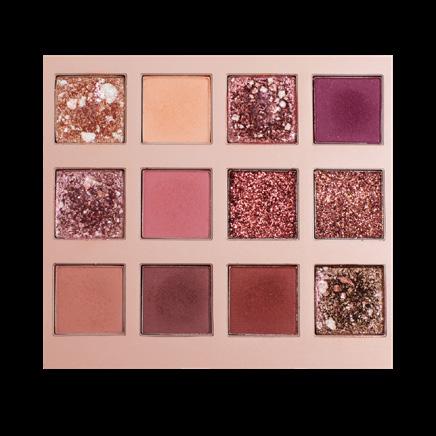


***
12 | SPRING 2024
Keeping up with Kali From the East to the West
Skulls adorn her neck, wearing them like a prized jewel. Chopped hands circle around her waist, the only piece of “clothing” she wears. This is the image of the Hindu goddess Kali, who captures people’s eyes. There are hundreds of Hindu gods and goddesses, but Kali seems to draw in people the most. Hinduism has journeyed thousands of miles and discovered a home in the West, where thousands of Westerners find the answers to their spiritual struggles. The term “West,” discussed throughout, primarily refers to North America.
To understand Kali, one has to know the other Hindu goddesses. In Hindu mythology, deities are often manifestations of concepts. In Hinduism, Devi is the feminine divine, who takes three primary forms. The first is Parvati, the wife of Shiva, who represents motherhood and goodness. The second form is Durga, the warrior goddess. The final form is Kali, who represents the cycle of creation and destruction.
Kali was first introduced into Hindu mythology by destroying a demon named Raktabij. This story was written in the Devi-Mahatmya during the fifth to sixth century BCE. Durga was trying to defeat Raktabij, but she was not succeeding. Durga’s defeat caused her to become enraged, thus creating Kali through her anger. Britannica states, then Kali is able to defeat Raktabij by consuming his blood. Her defeat is how she became known as the goddess of death and destruction. Kali is usually depicted with limbs around her waist and severed heads as garlands, symbolizing detachment from ego. Detachment indicates that liberation occurs when one can release attachment to one’s physical self. Moreover, she is often seen stepping over Shiva. The act of feminine energy ruling over the masculine represents the supremacy of Mother Nature over man. There is duality in the presence of Kali, representing both motherhood and destruction.
Kali draws in people from the West due to her divergence from Western religiousideology. She is established as a feminist icon because of how she is presented. In India, Kali is not regarded as a feminist figure. She is seen as a more mother-like symbol. What creates this difference in thinking? To someone who is not a devotee, this image is radical. It challenges beliefs that are practiced in Western religions. Kali is not the traditional image of a wife or mother. Yet, she is both things. This contradiction finds solace in Westerners longing to break free from dualistic thinking. The notion of mother and wife has ties to characteristics such as patience, dependence, and obedience. However, the portrayal of Kali invokes features such as power, independence, and unruliness. According to “Encountering Kali: In the Margins, at the Center, in the West” by Rachel Fell McDermott, these characteristics provide feminine strength in a phallocentric society.

Additionally, Kali’s marketability significantly increased her popularity. McDermott wrote that her contrast of femininity provides an open market to those “seeking meaning outside of Christian and Jewish norms.” The powerful imagery discussed previously is a gateway to producing products that appeal to those longing for meaning outside of their monotheistic traditions. The hippie movement capitalized on this longing. There was an introduction of products such as tarot cards, astrology books, crystals, gurus, etc. It is what is now known as New Age spirituality. The “New Age” market has taken this dissatisfaction of Westerners and used it to iconize Kali. The patriarchal society that exists today enables the growing interest of Kali. Often, females are put down in Western society. That is not to say that Hindu societies do not do the same. Goddesses such as Kali have been in Hindu culture for thousands of years, so Hindus do not look at them in a yearning light. On the other hand, Western cultures do not have these powerful feminine beings to look up to, so they turn to Eastern cultures, such as Hinduism, to call upon that divine feminine energy.

As Kali’s worship and mythology grew through time in India, she began to voyage West, finding solitude there. In the 1960s, there was a massive boom of ideas about Eastern spirituality due to a growing desire to stray away from the norm. Among these ideas was Hinduism, which was developed in an attempt to find peace and freedom. The hippie movement is often seen in conjunction with peace and freedom. During this time, people sought new ideas corresponding to love, sexual reform, feminine ideology, etc. These are values the West deemed Kali represented and aligned with the beliefs they were trying to cultivate.
Kali has risen in popularity in the West due to her contrasting monotheistic values, thus creating a feminist figure. The market plays an additional role in this popularity by capitalizing on that divergence in thinking. It is clear that her powerful imagery attracts those who are seeking further meaning than what society has created for a female figure. Kali’s rise in the West has explored the growing want for female empowerment, inspiring many generations to embody their inner Kali.
by
Sami Nandam art/Raja Ravi Varma design/Khadija Nemazie & Liana Proagr
SPRING 2024 | 13

Proving Them Wrong <3
An indie artist spotlight with MICO




old up, hold up,” says the artist mid-song as the band slowly stops playing. “I see a lot of people in this room not f***ing moving like I asked you to. So real quick, we’re all gonna crouch down, okay?,” the artist’s second request is heard and the band and the crowd slowly begin to crouch down. A low murmuring runs throughout the crowd as the lights go down.
“And on the count of three, are you ready to f***ing jump? One, two, ONE, TWO, THREE, JUMP!” With his exuberant cry, the lights flare and everyone in the venue begins jumping. The guitarist and bassist gleefully hop around in time with the song. All 1,000 fans jump in time, as the artist sings the chorus of “prove me wrong.” United as one, they all scream the peak of the chorus together, “I hope you prove me wrong, hope ya prove me wrong,” as MICO breaks into a massive, open-mouthed smile, embodying the joy of the moment.
Debuting on June 27, 2019, Filipino Canadian singer-songwriter MICO began on a path that not even he could see the end of. Slowly building his fanbase through SoundCloud, Discord, and TikTok, MICO has amassed 484,050 monthly listeners on Spotify and 607,285+ followers collectively across his Instagram, TikTok, and Twitter. Some of his most streamed hits are “cut my hair,” “lie lie lie,” and “down!,” all of which helped cement his unique music style in a blend of 2000s nostalgia, modern pop, and punk rock.
MICO played his first live show on Nov. 20, 2022 his hometown Toronto, Canada, and has since embarked on his first headliner tour across North America. He sold out three stops on the first half of the tour and would later sell out the entirety of his U.S. east coast stretch in the second half of the tour. And he’s achieved all of this before his 21st birthday! With his sights set on a radio takeover, there’s no telling where the limit is for MICO.
by Liana Progar design/Alyssa Mugavero photography/Julia Tsaknis & Marco Muia
“H
14 | SPRING 2024


Q: How did you get into pop


A: I’ve always been very popfocused as a kid; I’d listen to the pop rock bands my dad loved from the 80s, but then I stumbled across 5 Seconds of Summer and while they’re very pop focused, it’s kind of a gateway into that style and I just kept listening deeper and
Q: What about the early 2000s and 2010s punk pop scene made you think “This, this is the style of music I want to create?”


A: It just had so much energy yet so much heart in it; you could say things so unapologetically and so melodramatic without it feeling out of place. I kind of like to juxtapose it with the very blunt lyricism we’ve all gotten used to in more modern music, but having that freedom
Q: Why did you decide to pursue
A: I never really decided to, it was just what I gravitated towards the most as a kid. I really didn’t have any other ambitions, and when I started releasing in 2019, things just started going on SoundCloud and Spotify, so it just made sense to keep going. I didn’t really have any other options at that point.
Q: Did graduating from high school and your career building steam during COVID-19 affect how you make music or what you’ve created?
A: Absolutely. I’ve always been social media driven, but then to have an audience that’s used to in-person experiences suddenly at my fingertips because they didn’t have anywhere in-person to go, is a very powerful tool. It’s a moment that I knew I wanted to capitalize on, and I wanted to make people feel like they were a part of something again like how concerts and meet and greets and street teams would make you feel, just online.
Q: In your opinion, how has TikTok helped influence your career as an artist?
A: It’s really funny because all of the songs from the “second thoughts” EP and “half of the tears we fight” EP were already written by the time I’d had a moment on TikTok. It didn’t influence my music very much but it had a very strong impact on how I viewed pushing myself. TikTok itself is just a
very personal app; even with reels and shorts, you see more of a commercialized/professional vibe than with people on TikTok just going on their phones and pressing record. I just wanted to showcase how much I cared about what I was writing, how passionate I was about listening and being a fan of other artists, and have people resonate with that.
Q: Can you tell me about how Discord helped build your career?
A: Discord was one of the first tools I utilized when I was starting the mico project. I don’t know how much you know about the discord scene, but basically everyone from the SoundCloud indie-pop and hyperpop scenes were using it because we were all chronically online and played games more than we made music. It became a really useful tool for meeting people, and eventually, people I knew started to help platform me with their audiences online and I could use Discord as a general chat for all of my fans to interact in one place and feel more connected than Instagram comments ever could.
Q: Headlining your first North American tour and selling out multiple stops along the way, did you ever think you’d be able to achieve all this before you were 21?
A: No, definitely not. Especially growing on TikTok, it was always a fear of mine that tickets just wouldn’t move. Especially with all of the building really only happening in the last year, it’s kind of wild to me.
Q: Has there been a moment when you realized “I’m doing it, I’m making it?”
The first show in November of 2022 was the first time I could visually see people resonating and actually put faces to a lot of comments I’d receive. Numbers are just numbers, but real people are real and that’s what really made me feel it.
Q: What’s next on your musical journey? What are your goals?
A: I have zero ideas. After this year, it’ll actually be the first time in three years I have absolutely nothing in the vault. It’s a bit scary, but it’s exciting to be able to start from scratch again.
Q: Best moment(s) from your tour?
A: Meeting everyone and hearing everyone’s stories has been amazing. I make it a goal of mine to meet as many people as possible; I haven’t been doing paid meet and greets this tour, just meeting as many people from doors opening until the venue kicks us out. It’s really awesome seeing everyone and hearing everyone’s stories.
Q: Worst moment(s) from your tour?
A: You’d think it’d be getting robbed1, but it was actually everything after until we got back to Canada. We’d have to spend every free day trying to figure out how to replace the stolen passports and how to deal with the gear being gone until we could be back in a more familiar place.




SPRING 2024 | 15
Q: Funnest moment(s) from your tour?
A: Honestly just the van2. The van is 90% of the trip, so we kind of have to make it interesting and those conversations don’t ever disappoint.
Q: What are you looking forward to the most for the second half of the tour?
A: I’m just really excited to play the hometown shows again. We did an Ontario run earlier this year and it was wild to me how many people so close by in neighbouring cities were resonating with the music, and I can’t wait to feel that sense of local community again.
Q: What is your favorite song you’ve made?
A: “another soul” just holds a really special place in my heart. “the tears we fight” was originally supposed to be a sister project to “second thoughts,” but then after writing what would be the first three singles and some others, I just wasn’t really happy with the direction and “another soul” really helped solidify what it is that I wanted to make.
Q: If you could only show people three of your songs, what would they be?
A: “another soul”, “cut my hair”, and “prove me wrong” all fit that bill.
Q: What made you want to let other creators use your music?
A: Before I was making music, I was creating gaming content. Especially in recent years, I’ve seen a lot of my friends struggle with finding good music to be able to play in their videos, and seeing how beneficial it is to both content creators and musicians looking to be platformed, it just makes too much sense to do instead of making a couple of cents off of claiming things.
Q: Do you think being a Filipino Canadian artist has shaped the way you create music?
A: Absolutely. The only reason I’ve been so performancefocused over studiofocused is because of how I was raised and how important being a showman is culturally.
Q: What made you decide to incorporate fighting for more Asian/Filipino representation in the music industry into your career?

A: I’ve just seen the story too many times where Filipinos
would be locked into the Filipino industry (which the contracts are mostly terrible), or how half-Filipinos would make it solely because they showcase the other half of them and let the Filipino part just be the singing part. While it’s a large part, it’s a lot more than that, and I just want to showcase that Filipinos can be excellent songwriters, amazing public personalities, and that we hold the door open for each other.
Q: Why did you decide now is the time to try and break into the radio sphere?
A: It just feels like it’s been a huge barrier and what really quantifies making it, not to me but to a lot of outsiders. I’m content with where I am and where it’s going, but I’m still mostly shut out of a lot of places in the industry. And I’m just constantly on a vendetta to prove them wrong and to prove that I have a place here.
Q: If people had to take one message away from you and your music, what would it be?
A: Don’t give up. Whether it’s in personal strides or public persona, everything I write and do, even if it’s mostly sad, is always after the fact. There’s always recovery, there’s always ways to make the bad look beautiful, and there’s always more than what’s directly in front of you.
Q: Question submitted by Jared Luzod, a UCF Filipino musician: “I would ask him if he would like to perform at UCF one day haha. But I would ask where he mostly gets his inspiration from, like artists, genres, I feel like we have similar music tastes after seeing his TikToks where he would reference artists like “The Band




A: I mostly listen to any genres that have “pop” in the word! pop rock, pop punk, alternative pop, pop rap... I’m literally just a sucker for all styles of music mixed with pop songwriting styles. It’s amazing to me how so many artists can make so many different styles of music and still have that recognizable feeling, and that’s what I’m inspired
Q: How do you get your inspiration for your music video concepts?


A: I usually just sit down with Adit3 and brainstorm all ideas possible for whatever song it is. It’s very much driven by narrative rather than looks or aesthetics; the aesthetic is often a second thought for me over conveying the message at hand.
16 | SPRING 2024
Q: Being two of your most streamed songs on YouTube, what do you think sets “cut my hair” and “lie lie lie” apart from your other songs?
A: I think they just encapsulate that youthful feeling with forward thought processes. I’ve always been the kid that’s more emotionally mature than the others (or so I’ve been told), and those songs kind of encapsulate that feeling perfectly; of feeling young yet feeling a bit more than those around you.
Q: I noticed a handful of your songs like “peaked” and “down!” include lyrics about the struggles of adulthood and uncertainty in the future, what motivated you to want to write lyrics about this topic?
A: Nothing is ever guaranteed to you, especially in the arts. Even if you work hard, it’s really a stroke of luck whether or not you get a chance. And especially being an age where every step matters for your future, that uncertainty really drove those ones in the writing.







MICO and his band successfully closed “The Fantasy Tour” in his hometown Toronto on Dec. 7, just a day after his 21st birthday. As a special surprise, MICO hosted a 19-year-old plus “Fantasy Tour Afterparty” following the end of the concert. Throughout the tour he had been performing three unreleased songs: “better,” “treat your friends,” and “twenty-something.” As a reverse birthday gift to his fans the Amicos, he released these songs on an EP appropriately called “the afterparty” at midnight on his birthday. “I never really liked celebrating my birthday; so this year, I gave myself a reason to,” MICO wrote on “the afterparty” announcement post.
Striving to be an amazing singersongwriter and performer, the world is MICO’s oyster. Limited by only his ambitions, MICO can prove to the world that Filipinos are equally as great musicians. He could be the person to hold the door open for other underrepresented artists, like others have before him.
Historically, Filipinos have helped shape and change the music industry in many ways, for example “Filipinos Represent: DJs, Racial Authenticity, and the Hip-hop Nation” reads that 1980s and
to “Race- and gender-based underrepresentation of creative contributors: art, fashion, film, and music,” out of a sample of 220 musicians, they found that 1.9% of the participants identified as Asian. Out of 220 musicians, only four identified as Asian.
“I do wish there was more Filipino representation in the music industry. Even though we have heavy hitters like Olivia Rodrigo and Bruno Mars, I do wish some smaller artists like MICO and Lyn Lapid would be more known,” Luzdo said. “I would be happy to support such Filipino artists.”
For there to be more representation in mainstream music, or even different genres, smaller artists like MICO need to be offered the same opportunities as those with record label, brand, or investor backing. As an independent artist, getting your song played on the radio is an extremely difficult task. Being an independent artist makes getting your songs heard by many an uphill battle.
“I want to prove that against all odds, someone starting with zero connections is able to do what others thought to be impossible,” MICO wrote on his amicos.hq Instagram page back in Oct. 2023 when he announced his next venture, making it on the radio.
“We’re gonna be starting out with small operations (listening parties, street team, posters/flyers, etc), with a huge central goal; a full-blown radio campaign solely driven by fans.
in the turntable era, “were at the forefront of the turntablist movement, leading the way in pushing the sonic boundaries of DJing and advancing the notion of turntables as musical instruments.” More recently, mixed Filipino artists like Bruno Mars, Olivia Rodrigo, Apl.de.ap of the Black Eyed Peas and H.E.R. have made homes for themselves in the earbuds of
While there are some big names in music who represent minority communities, there is still a large gap between the various ethnic communities. According

It’s a huge ask, maybe even an impossible ask... but I’d rather die trying than let other kids like me give up because they think they need a s***ty deal that they don’t. We’re already proving a ton of people wrong; nobody expected a 20-year-old Asian Canadian to sell out shows across the continent fully independently in the rock space. Let’s prove them wrong again <3”
1MICO and his band’s travel van got broken into in California. The thief stole valuables such as passports, electronics, and jewelry.
2MICO and his band drove to every tour stop in a van.
3Adit is MICO’s music video director.
SPRING 2024 | 17
BECOME An ASian TODAY! GRANDMA
Being an Asian Grandma is a state of mind, not a state of being. One might think to be a grandma you have to be graying and wrinkling. You have to possess the wisdom only aging provides. And at the bare minimum to be a grandma, you need to have grandchildren. And to that I say “nay.” You need not these things to be a grandma! What you need is just a few tweaks in your lifestyle and you too, you, at the ripe age of 21, can become a grandma.
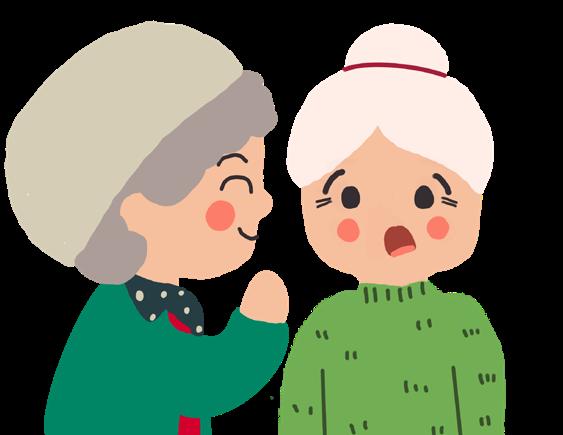
Chit-chat
If Asian Grandma is not watching TV, cooking, gardening, or asking you if you ate yet, she’s chit-chatting on the phone. Sometimes she is on the phone and doing these activities simultaneously. Grandma loves the hot gossip. She loves bragging about her grandkids. And if you’re lucky enough to be there when she hangs up, maybe she’ll share a little of that gossip with you too.
CAi luong (Vietnamese folk opera)
Cải lương is always on the TV of a Vietnamese Grandma’s house. It is a combination of southern Vietnamese folk songs, classical music, and modern spoken drama. It is often set in ancient times with the characters wearing colorful and intricate outfits. The men’s faces are decorated with interesting facial hair and the women with bright makeup. Cải lương boasts a special kind of singing called vọng cổ, with đàn tranh zither and đàn ghi-ta (Vietnamized guitar) swelling in the background. The actors use a combination of spoken dialogue and vọng cổ. You best believe when it was time for Cải lương, bà nội (grandma) will yell from across the house, “Đổi kênh cho bà nội đi con!” Change the channel for grandma! And when she does, you’d better stop what you’re doing and run for the remote.



Knitting
Want a handmade sweater made in ethical and lush working conditions? Tell Asian Grandma, and she’ll have a hand-knit cardigan ready for you the next time you come over. Need a hemline taken up, give it to Asian Grandma, she can do that with her eyes closed. Asian Grandma can knit, sew, and crochet. She can look at a store-bought knit garment and recreate it, no pattern required.
“Did you eat yet?”
This is Asian Grandma’s number one concern. And even if you tell her that yes, you did eat, she will not stop asking until you repeat yourself at least four times. If you are feeling even a twinge of hunger, she will materialize something for you to eat-leftover rice and meat, soup, a bowl of nuts, and fresh cut fruit. Her fruit cutting skills are immaculate by the way.
 by Reagan Huynh
design/Daniela Kate Abaquita
by Reagan Huynh
design/Daniela Kate Abaquita
18 | SPRING 2024

Exercise
Asian Grandma will be going for a walk today. And tomorrow. And the day after. She has to survey the cul-de-sac. Ensure nothing is out of the ordinary. And of course, to get some exercise. Exercise is very important to Asian Grandma. Exercise consists of swinging her arms, kicking her legs while sitting on the couch watching tv, and stretching before bed.
DAu giO xanh-herbal oil
Every Asian Grandma has this in their purse. In Vietnamese they call it, dầu gió xanh, which translates to “herbal medicinal oil.” Put your nose up to a bottle of this green liquid and the pungent spicy mint smell will make your eyes water and wake your senses right up. This oil is used for everything! Sore throat? Dầu gió xanh. Stomach ache? Dầu gió xanh. Bump your head? Dầu gió xanh. Break your leg? Dầu gió xanh.



Gardening
Asian Grandma has a green thumb. When you come over, her garden is often the first thing she shows you. If it’s too sunny, she’ll pray for rain. And if it’s too rainy, she’ll pray for sun. You see those leafy green veggies, cucumbers, tomatoes, and oranges on her table? Yeah. She grew those.
Function over Fashion
she’s She’s lived too long and through too much to care whether perfectly good polka-dot cardigan. Who cares that it clashes with her striped shirt, and that the color doesn’t go well with the other pullover sweater she’s she’ll wear a bucket hat with her church dress, socks with sandals. She’s not ashamed.


This story is by THE UNIVERSITY OF SOUTH FLORIDA SPRING 2024 | 19

A New Look Palestinian-Israeli Crisis on the
How Realizing Our Humanity Solves Our Problems

On Oct. 7, 2023, Hamas, a Palestinian militant group operating primarily in Gaza, launched a surprise attack on 22 locations in Israel, killing, according to Lauren Frayer in “Israel Revises down Its Death Toll from the Oct. 7 Hamas Attacks to about 1,200”, approximately 1,200 Israelis in the process. In response to Hamas’ aggression, the Israeli government launched an extensive bombing campaign and ground invasion of Gaza with the supposed aim of eliminating the threat of Hamas. The Israeli government’s disproportionate response, which, according to the United Nations Office for the Coordination of Humanitarian Affairs, has
by Anonymous
Advocate photography/ Anonymous Advocate design/art/Asma Ahmed
20 | SPRING 2024

resulted in the deaths of over 30,000 Palestinians, has embroiled the entire world into a fierce debate over which side is justified, when will the killings end and what solutions should be implemented going forward. In this entire frenzy one thing is certain, not enough people are remembering their own humanity when navigating this deeply pressing matter.
FROM CRISIS TO GENOCIDE
The Israeli government’s disproportionate carpet bombing, medieval style siege and blockade of humanitarian aid to Gaza has led many to call out Palestinian suffering for what it is– a genocide. Read in “South Africa’s Genocide Case against Israel” by Rashmin Sagoo, South Africa even made an appeal to the International Court of Justice (ICJ) alleging that Israel is in violation of the Genocide Convention, a 1948 United Nations treaty created in response to the atrocities that ensued during World War II that outlines what constitutes a genocide and the responsibility for signatories of the treaty to reprimand those in violation of it. Legal analysts and historical precedence tells us that it will take years for the ICJ to make a ruling on South Africa’s allegations, but that hasn’t stopped the international community from making their own judgment.
Article II of the Genocide Convention defines genocide as “any of the following acts committed with intent to destroy, in whole or in part, a national, ethnical, racial or religious group, as such: (a) Killing members of the group; (b) Causing serious bodily or mental harm to members of the group; (c) Deliberately inflicting on the group conditions of life calculated to bring about its physical destruction in whole or in part; (d) Imposing measures intended to prevent births within the group; (e) Forcibly transferring children of the group to another group.”
Considering the careless treatment of Palestinian life and the forced displacement of Gazans, everyday advocates for peace are confident that calling the “Palestinian Crisis” the “Palestinian Genocide” is not only colloquially appropriate, but also legally justified as per Section II of the Genocide Convention. So, South Africa won’t be hearing back on its initial allegations for years to come, but they are able to demand interim relief through provisional measures. In response, the ICJ ordered that Israel must: prevent any acts prohibited in the Genocide Convention from occurring, prevent and punish public incitement to commit genocide, enable humanitarian aid to Gaza and prevent destruction of evidence pertaining to South Africa’s allegations. Naturally, the ICJ doesn’t have any way to enforce these provisional measures as they don’t have their own military force. Nonetheless, proponents of Palestinian liberation take it as a resounding victory that solidifies the international community’s intolerance for the Israeli government’s genocide of Gaza.
THE RIPPLES AT HOME
Just eight days before he was murdered, 6-year-old Palestinian American Wadea Al-Fayoume was celebrating his birthday with his loved ones. Little did the Al-Fayoume family know that just a few days later Wadea, and his mother Hanaan, would be the victims of an egregious hate crime by their very own landlord Joseph M. Czuba. Czuba, who had grown disgruntled and paranoid from the news coming out of Israel, confronted Hanaan about the ongoing crisis, projecting his fear and anger, he succumbed to his delusions about the imaginary threat that the Al-Fayoume family posed and brutally changed their lives forever. Wadea was fatally stabbed 26 times, Hanaan, who was hospitalized and survived, was stabbed more than a dozen times. According to “‘I Am Not a Threat’: Hundreds Gather for Vigil Mourning 6-Year-Old Palestinian-American Boy Who Was Stabbed to Death near Chicago’’ by Nouran Salahieh and Andy Rose, The Will County Sheriff’s Office asserts that Wadea and Hanaan were targeted because they were Muslim and as a consequence of the rising tensions due to the crisis in Gaza. A vigil was held in which friends, family and community members expressed their heartbreak over Wadea’s death, a common theme was uniting on the basis of peace and humanity– attributes that transcend all boundaries. Wadea’s tragic death serves as a reminder that peace, compassion and understanding are the only reasonable attitudes and actions in such a pressing time. In the absence of humanity, even a deeply beloved child can fall victim to the hate and division that clouds the hearts of those that aren’t certain of their humanity.
On Nov. 22, 2023, Stuart Seldowitz, former director for the National Security Council and former senior political officer of the State Department’s Office of Israeli and Palestinian Affairs, was arrested for a hate crime. His charges included aggravated harassment and stalking of the 24-yearold Q Halal Cart owner, located in the Upper East Side of Manhattan. Read in “Former State Dept. Official Arrested in Harassing of Halal Food Vendor’’ by Erin Nolan, Seldowitz made numerous derogatory remarks towards the owner of the food truck such as calling him “ignorant,” “terrorist” and threatening to report him to Seldowitz’s “friends in Immigration.” Seldowitz even expanded his attacks by proclaiming that: “If we killed 4,000 Palestinian kids, you know what? It wasn’t enough.” New York Governor Kathy Hochul and New York City Mayor Eric Adams both called out Sedlowitz’s heinous behavior, but his unprovoked ruthlessness signifies a larger problem in the discussion of foreign affairs. Not only is it concerning that Seldowitz had direct involvement with Israeli and Palestinian affairs under the Obama administration, but his clear complacency and support for killing more civilians suggests that we, as citizens of the United States, should be wary of the motives of our government officials. Not only did Seldowitz display on camera how unfit he is to handle foreign affairs, but he also highlighted the bigoted mindset that comes with abandoning one’s humanity.
SPRING 2024 | 21
While shouting “Free Palestine,” U.S. Air Force Cadet Aaron Bushnell set himself ablaze in front of the Israeli embassy in Washington D.C. on Feb. 25, 2024 as to “no longer be complicit in genocide.” Bushnell, who was taken to the hospital in critical condition, succumbed to his selfimmolation and left a heart wrenching mark in his place. According to “Aaron Bushnell: Us Airman Dies after Setting Himself on Fire Outside Israeli Embassy in Washington” by Tom Geoghegan and Kayla Epstein, Bushnell was top of his class, a senior airman and an aspiring software engineer— nothing short of a highly accomplished person. But above all else, he was someone who deeply cared about humankind, so much so that he felt he could no longer be associated with the United States’ unconditional support for the Israeli government’s demolition of Gaza. Written in “What We Know about the Man Who Self-Immolated in Front of the Israeli Embassy” by Matt Stieb, people who were close to Bushnell expressed their shock and sorrow of his death, “It’s hard that he chose these actions, it’s hard to comprehend even from people who sympathize with a ceasefire and the safety of Palestinian people and civilians.”
ALL EYES ON PALESTINE
As the horrific death toll in Gaza ramps up with the ongoing genocide, the international community has responded in a major way. Protests have erupted across the world from Istanbul to London with crowds in the thousands, all calling for an immediate ceasefire and a free Palestine. Social media has erupted with awareness posts, ways to provide relief and even on the ground reporting by journalists like Wael Al-Dahdouh, Plestia Alaqad and Motaz Azaiza. The outpour of support for Palestine even resulted in an ongoing global boycott of corporations with financial ties and obligations to Israel such as Starbucks, McDonald’s and Disney. Moreover, the gravity of this movement can even be seen in the current
permanent ceasefire. Notably, the “Uncommitted” movement and electorate is composed of West Asian Americans, Muslim Americans, Hispanic and Latino Americans and college students – all key voter demographics in the General Presidential Election. As seen in Representative Cori Bush’s website “Calls for Ceasefire Grow in Month Following Introduction of Ceasefire Now Resolution.”, outside of the United States, world leaders like Indonesia’s President Joko Widodo, Spain’s Prime Minister Pedro Sánchez, Brazil’s President Luiz Inacio Lula da Silva and Colombia’s President Gustavo Petro have all joined the effort to pressure Israel into stopping the massacre. As the world watches on, everyone’s focus has now shifted to the Palestinian city Rafah which, according to Al Jazeera’s article “What’s Happening in Gaza’s Rafah as Israel Threatens to Attack?”, holds more than 1.4 million Gazans who were forced to move south in the hopes of safety. The Israeli government has ordered numerous airstrikes on the makeshift tent cities in Rafah with plans of a ground attack looming. With all eyes on Rafah, the international pressure has grown even stronger in pushing for a permanent ceasefire out of fear that Israel will expand its airstrikes on Rafah into a ground attack.
THE MARCH ON WASHINGTON
On Jan. 13, 2024 thousands of people from across the United States made their way to Washington D.C. to march for Gaza. As reported by Edward Helmore and Maya Yang in “Thousands March on Washington to Demand Ceasefire in Gaza.”, this demonstration highlighted the urgent need for an immediate ceasefire and an end to the United States’ financial aid to the Israeli government. People from all walks of life were there, united as a single body in support for Palestinian liberation, and I’m honored to say I was a part of that crowd. As written in the “Endorsers” page of the official March on Washington for Gaza website, this event was endorsed and sponsored by numerous advocacy organizations like American Muslims for Palestine, Jewish Voice for Peace, CODEPINK, Doctors Against Genocide, A.N.S.W.E.R. and many more. Truly, the support for this event was overwhelming and the pressure put onto the United States government was immense. It was my first time visiting the capitol of the so-called free world and I look back at the experience fondly for reminding me that protesting is one of the most democratic and patriotic actions a person can take. Associating my first time in D.C. with a collective effort to pressure our government into taking the right course of action will forever leave a lasting impression in my mind. I remember making my way into the large crowd with my older brother, we got lost in a sea of people from every background imaginable. It was simply a beautiful sight



22 | SPRING 2024
representation of what the United States is at its core – a diverse coalition spanning across all of humankind. Protesters, including myself, enjoyed inspirational speeches and calls to action from a gifted panel of speakers such as presidential hopefuls Jill Stein and Cornel West, CODEPINK’s Madea Benjamin and even a video from renowned Palestinian journalist Wael Al-Dahdouh. After the speeches, we made our way from Freedom Plaza to the White House lawn, chanting “Free Palestine” and holding posters and flags along the way. When we finished with the demonstration and began walking back to the metro, it was surreal and heartwarming to see so many keffiyehs, traditional Arab scarves largely associated with Palestinian liberation, being worn in the streets. My older brother and I didn’t feel like we had to take them off now that the rally was over and that left a lasting memory that we carry with us to this day. The display of diversity, democracy, compassion and humanity at the March for Gaza was an inspiration for all who saw it. It was proof that the people of the world stood in opposition to their corrupt governments and chose humanity over division.
THE WESTERN ASIAN AMERICAN STRUGGLE
When the destruction of Gaza began, confusion shrouded my identity and heartbreak dictated my attitude. This reality was clear for so many West Asian Americans, who, on the surface, were leading their normal lives, but in actuality struggled with processing and coping with the terror coming out of Gaza. Growing up I was unsure what to mark on forms or documents that asked for race because I hadn’t yet gone through piecing together my identity. The census says we’re caucasian, but British colonizers coined and popularized the term “Middle East.” So, when I was asked about race I was confused because I didn’t resonate with the experiences or culture of those who traditionally marked caucasian and I didn’t feel right using a term that was made from a Eurocentric perspective. Eventually, I took comfort in the strict geography of my roots and found a home in the all encompassing choice of Asian. To this day, I’m proud to say that I’m a West Asian American, born and raised in the United States with a simultaneous love for both my American and Asian nationalities. However, the same confusion that I felt at the onset of my journey with my identity resurfaced when Gazans were being killed in disproportionate numbers. Especially when the United States media apparatus made no effort at all in covering the horrendous genocidal conditions the Palestinian people were

stoic for some time because no one seemed to understand how difficult and frustrating it was to continue business as usual with the horror stories from Gaza replaying in the back of my head. And to add onto that, I found no solace from the United States government and the Biden administration who were in fact the primary enablers of the killing of innocent Palestinians. Even now, it’s disheartening to experience the betrayal of people and institutions you consider friends or allies that remain silent in the face of this blatant genocide. I think so many of us are fearful, we’re fearful that history will repeat itself in such a way that suffering will go unnoticed and unaddressed and our belonging will be put into question. I personally believe that the United States is the most beautiful country in the world because of its diversity. It’s refreshing to look around and see people from all walks of life with all sorts of different experiences, thoughts and emotions. I hope any untrue speculation, assumptions or extrapolations about Oct. 7 don’t blindsight my fellow Americans into abandoning what makes us so powerful –our diversity. West Asian Americans deserve to be proud of their heritage and have a say just like every other American because diversity in discussion, thought and idea are just as important as diversity in race. We have so much to bring to the table, especially pertaining to this discussion because we understand the politics, culture and history that rule West Asia. We must make an active effort to be proactive and intelligent in our judgments, decision-making and solution-making, all of which require the wisdom of those that know this crisis well. All in all, I’m hopeful and excited to see West Asian Americans continue pushing the boundaries of advocacy and offering their authentic perspectives as we work to solidify our positive mark on society.
A CALL TO HUMANITY



SPRING 2024 | 23

spared from the Israeli government’s brutal and offensive siege of Gaza. The displaced Gazans are unable to find food to feed their starving families, many of which have recently resorted to eating grass and drinking seawater. The horrific medical condition of the people, only worsened by the lack of supplies, sees children getting amputations without anesthesia because their parents simply have no other choice. There is absolutely no time to waste, the Palestinian people are being subject to genocide as we speak and the clock has far run out by now. We must do everything in our ability to make their suffering known, such that our governments are pressured to take action and so that those that have remained silent are compelled to speak. The least we can do is amplify and reciprocate the same hope and resilience we see from the Palestinian people themselves. Even in their darkest hour they still maintain their love for life by engaging in communal prayer, celebrating weddings, singing songs and playing sports. If they’re able to hold onto the little light that they have, our role is to illuminate the rest of the world with it.
The display of diversity, democracy, compassion and humanity at the March for Gaza was an inspiration for all who saw it. It was proof that the people of the world stood in opposition to their corrupt governments and chose humanity over division.
The atrocities ensuing in Gaza and the resulting response serves as a reminder that we still have work to do in the discussion and debate of sensitive topics. While I do think there’s been more awareness surrounding the Palestinian plight as of late, I still find myself concerned about the
indicated that revisiting the history books may not be the whole solution, perhaps we must also revisit our own humanity as well. When we remind ourselves that the people being killed in so called “foreign lands” also lead lives like we do, also have hopes and dreams like we do, also laugh and cry the same way we do and also want to feel loved and heard like we do, we will all be in a greater position to understand the pain and suffering of our fellow human beings. And from that pain and suffering we shouldn’t become obsolete or get discouraged, but rather we should rise up and proclaim the freedom and prosperity of our brothers and sisters in Gaza, the same way we proclaim freedom and prosperity for ourselves and our loved ones and the same way we hope others do the same for us. It’s time for us to coalesce on our universal commonality as peaceloving humans and declare our loyalty and service to one another. And when we dedicate ourselves to that mission the proponents of division and chaos that benefit from our disunity are rendered incapable in the face of our unity. When we realize that no one profits or enjoys our hate for one another, but those that are least deserving of profiting and enjoying then we will have realized the value of our humanity. Only when we seize the power of us working together and take a stand against injustice and those who take comfort in war will we certainly know that choosing peace, love and compassion is the only path forward. So, if you love your fellow

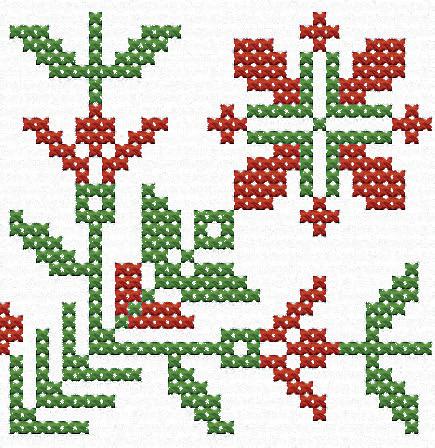

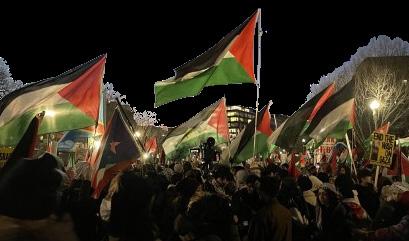

24 | SPRING 2024
The
Mind of Miyazaki
Blissful, artistic scenery. Cuddly, talking creatures. Delicious food that you just want to take a bite out of. All these elements and more define the beautiful animations that Studio Ghibli has meticulously created for audiences worldwide. Some of the animation company’s most iconic works come from its infamous co-founder, Miyazaki Hayao. He has been considered an inspiration by many artists and storytellers from around the world for almost four decades, showcasing heartwrenching themes in the most picturesque way, but how did this artistic genius come to be? What approaches did he have when creating his films?
Miyazaki Hayao was born in Tokyo, Japan on Jan. 5, 1941. His father, Katsuji, was a director at his brother’s airplane company, Miyazaki Airplane, which gave him a love for flying and inspired his future works. His mother, Yoshiko, also inspired him with her way of life, being intellectual, strict, and always questioning the “societal norms,” at the time. However, Miyazaki’s early childhood was riddled with the events of World War II, with bombed cities and constant evacuations. This terrible backdrop at that time left a lasting impression on him.
Around the time that he started school, he initially aspired to be a manga artist, but had trouble with drawing people, only recreating images of war-like vehicles for many years. Despite this, he was fascinated with the art of animation, and had even skipped out on studying for his college entrance exams to go see Japan’s first featurelength animated film, “Panda and the Magic Serpent” (1958). He then went to Gakushuin University to study economics and political science, while simultaneously becoming more involved with art on the side. He joined a small art organization on campus, visited his middle school art teacher to sketch away in his studio and even threw around some story ideas in the manga art that he created.
In 1963, Miyazaki graduated and started working for Toei Animation, where he met his future business partner, Takahata Isao, and his future wife, Ota Akemi. As they all worked their way through the animation industry, Miyazaki contributed to multiple projects and even made some of his own, with his first feature-length film being “Lupin III: Castle of Cagliostro” (1979). He started to establish his individual art style more with the release of a monthly manga strip, “Nausicaä of the Valley of the Wind,” which followed a warrior princess named Nausicaä, who navigates an ecologically destroyed world in the distant future. The strip gained a ton of popularity, and he was encouraged to adapt it into a film. He refused at first but eventually agreed when he was allowed to direct. Being inspired by the Minamata Bay poisoning during the 50s and 60s, and how nature thrived in that polluted environment, along with the novel “Dune,” by Frank Herbert, he and Takahata brought on more animators and composer Joe Hisashi to highlight the dystopian atmosphere. “Nausicaä” was released in 1984, which was also successful and established Miyazaki’s reputation as
by Jolina Jassal art/design/Asma Ahmed


SPRING 2024 | 25
an artist. It became a favorite film for many sci-fi fans, including half-Japanese UCF senior Alan Giraldo. “The reason ‘Nausicaä’ is my favorite is because it was the very first anime that I watched growing up,” Giraldo said. “Being born in Japan and left when I was an infant, I wasn’t really exposed to my home country. My mother introduced this movie to me at a young age… it opened up my fascination with the sci-fi genre.” The success of “Nausicaä” further incentivized the duo to establish a permanent animation company: Studio Ghibli.
Throughout the 80s, Studio Ghibli produced hit after hit, from their first official movie, “Laputa: Castle in the Sky” (1986), to the film that established their opening credits, “My Neighbor Totoro” (1988), which initially wasn’t considered successful, but the merchandise exponentially promoted it. Both films received a great amount of praise. “Castle in the Sky will remain one of my all-time favorite movies because of its seamless blend of fantastical imagery, action-adventure spectacle, and childlike wonder,” UCF student Day Lin Cho said. Takahata led the production of “Grave of the Fireflies” (1988) and released it alongside “Totoro” to keep the studio financially successful. They also managed to acquire the rights to a famous Japanese novel, which eventually became “Kiki’s Delivery Service” (1989), the highest-grossing Japanese film at the time. “‘Kiki’s Delivery Service’ is by far my favorite Ghibli film,” UCF student Ava Dennison said. “The whimsical element of it is something that I hold dear to my heart because Kiki’s Delivery Service and other Ghibli films became an escape for me during COVID.” However, despite these great successes, there’s more in store.


The 90s featured films with more somber tones, starting with “Porco Rosso” (1991). Independently leading “Porco,” Miyazaki explored anti-war themes, being inspired by the Yugoslavian war at the time, but he felt that the final product was too mature for children. However, he would save these morals for future projects. While the decade didn’t start particularly well, it certainly ended with a bang, with the release of “Princess Mononoke” (1997). The story follows Prince Ashitaka, who goes on a journey to cure himself from a curse, and stumbles upon a conflict involving nature and humanity. It was the first animated film to win the Japan Academy Film Prize for Picture of the Year, and it was also the highestgrossing film in Japan for several months (it’s quite the trend that they stick to).
Entering the 2000s, Miyazaki realized that he hadn’t created a film that appealed to young girls. He found that the popular magazines that catered to girls at the time didn’t truly understand what they “held dear in their hearts,” and only discussed school-girl crushes
and simple romance. Along with wanting to highlight human greed, he created “Spirited Away” (2001), which won Best Animated Feature at the Academy Awards, and won another Picture of the Year award. Like past Ghibli films, it was the highest-grossing film in Japan and maintained that record for 20 years. After the release of “Spirited Away,” they began work on converting a British novel into the animation medium: “Howl’s Moving Castle” (2004). He gave his anti-war message a second try when producing this film, as it revolves around a conflict between two fictional nations, putting the main protagonist, Sophie, and a wizard that she stumbles upon, Howl, in the middle of it. Miyazaki took a lot of creative liberties with the movement of the castle in the movie, as it wasn’t properly explained in the book. Upon release, it was received well around the world, including being possibly his most popular film in the Western world. In 2006, his son, Goro, came out with his first animated film under the company’s name, “Tales From Earthsea.” Miyazaki wasn’t present throughout Goro’s childhood due to his work, but Goro tried to impress his father, despite having no experience in the industry beforehand. However, his efforts had the opposite effect. Only an hour into watching “Earthsea,” Miyazaki walked out of the theater with a cigarette in hand, and said, “It feels like I was sitting there for three hours.” He went back in to finish the movie, and walked out again, saying, “I saw my own child. He hasn’t become an adult. That’s all… It’s good that he made one movie. With that, he should stop [making movies].” Despite this harsh criticism, he helped his son co-write “From Up The Poppy Hill” (2006), which received better reviews. In 2008, “Ponyo” came out and is considered by many as “The Little Mermaid” of Studio Ghibli. While Miyazaki was initially inspired by the latter source by Hans Christian Andersen, he was heavily focused on exploring a child’s universe. Wanting to only involve 2D animation without 3D effects, he insisted on drawing a lot of the frames himself, experimenting with the movement of the sea and waves. “Ponyo is the earliest Studio Ghibli film I remember watching…” UCF student Lucas Sanchez said. “...It incited in me an entire world flooded and open to new forms of exploration.”


26 | SPRING 2024



“Ghibli was my first proper introduction [to] animation and storytelling that made me love the fantastical and the colorful,”
—Lee Eimer
The 2010s were less eventful, with the only noteworthy release being “The Wind Rises” (2013). Miyazaki was inspired to make the film after reading a profound quote from Jiro Horikoshi, an engineer during World War II: “All I wanted to do was to make something beautiful.” Going off of the novel “The Wind Has Risen” (1936-38) and the life of Horikoshi, the film explores themes of pacifism over war, even though he denied having an anti-war stance in this project. Otherwise, the decade for Miyazaki was riddled with project proposals, retiring announcements that were eventually revoked and working on displays at the Studio Ghibli Museum.
In the past few months in the animation industry, animators have had a hard time keeping Miyazaki’s name out of their mouths, as his “retirement” film “The Boy and the Heron” (2023) was released in December, following a year-round Ghibli Fest that re-released all of the studio’s most iconic movies in theaters. Audiences, both old and new, were excited to witness a new story in a familiar, comforting art style. Cho has even praised it, “for respecting the audiences’ intelligence with its willingness to explore more mature, philosophical themes such as death and the afterlife amidst its whimsical visuals.” It won numerous awards this past award season, including an Academy Award for Best Animated Feature.
Throughout his 83 years of life, it’s impossible to argue that Miyazaki has no experience, much less an interesting perception of the world. His work throughout numerous decades has inspired many creators in multiple mediums, including some at the UCF campus. “Ghibli was my first proper introduction
[to] animation and storytelling that made me love the fantastical and the colorful,” Lee Eimer, president of the Writers Uknighted organization said. “I write often, and I started learning art because of Ghibli.” The aesthetics of the films even present themselves in students’ everyday lives. “I did my whole room in my apartment ‘Howl’s Moving Castle’- inspired, thrifting and upcycling furniture,” Dennison said. His influence knows no bounds, spreading across multiple generations and multiple countries.
For those who are familiar with his reputation, he can come off as strict, even strange to work with. He had a lot of outlandish practices, including separating animators by blood type and waiting at the front door for late employees. He was also motivated by failure, which he chose to spread throughout the studio. Steve Alpert, a former executive who helped Studio Ghibli’s outreach outside of Japan, detailed this experience while working for him in his memoir, “Sharing a House With the Never-Ending Man: 15 Years at Studio Ghibli”: “Several times after the completion of one of his films, Miyazaki would suggest that the studio be shut down and all the staff be fired. He thought this would give the animators a sense of the consequences of failure and make them better artists if and when they were re-hired for the next film. No one was ever sure if he was just kidding.” Some go as far as to describe him as extremely selfish, yet others also acknowledge that his selfishness, along with any artist’s selfishness, is a part of the creative process and that it helps contribute to great work.
He has also been known to be pessimistic at times, especially with where the modern world is heading with the environment and war. It baffles some on how he could create products that practically radiate positivity. However, these darker thoughts are present throughout his work, the malicious monsters hiding in the shadows of flower fields and open seas. While it is unfortunate that audiences tend to overlook the themes at times, maybe he also has an aligning agenda with their mindset. His films could be seen as an attempt to see the beauty and happiness in life, even with the evil that plagues it. Especially today, it can be hard to see the silver linings in the clouds, yet Studio Ghibli’s films remind us that they are still there. If anything, it allows accurate depictions of how life feels, which can connect to any audience member. “I believe Miyazaki and the company do a dentists’ job at creating memorable stories and experiences for their viewers in a beautifully crafted journey that’s enticing and relatable throughout,’’ UCF student Timmothy Tapia said. People admire not only the visual beauty he has provided, but also what that beauty says about us and our lives. Despite the darkness that Miyazaki had witnessed in his own life and around the world, he managed to make it into beautiful art with meaningful messages that we can all hold within our hearts.


source/ Studio Ghibli Co,. LTD.
SPRING 2024 | 27


My Love Letter to the Orlando Asian Community

Dear reader,
This year is my golden year, my senior year; with every passing day I am filled with memories and nostalgia. I often think back to the little Vietnamese girl born in a small town in upstate New York. She was one of three Asian students in her school and the only representation she saw was the nail salon employees where her family worked. I can vividly remember the self-hatred I had for my Asian facial features, The starvation I forced upon myself during school because I was scared my food would smell to others and the constant longing to look like those around me. I feel for my younger self and wish more than anything to hug her and tell her it will get better.
I look back to the frightened eighth-grader who was forced to uproot her life and move to Orlando. I fondly remember all those who helped me adjust and feel accepted. Still, I was always longing to go back to New York. I even recall the agonizing moment that would be the rejection letter to every New York college I applied to, desperately trying to go back to what I thought was home.




More recently, I think back to the life I had at my previous college in Los Angeles and how despite everything, I would come back to Orlando. Orlando has brought me so much stability; I am happier and healthier since moving back. With every milestone, I was twisted and turned. Never in a million years would I have thought this is how my life would go, but I wouldn’t change a single thing. These moments, whether heartfelt or heartwrenching, made me into who I am today.
Even though I was born in New York and I will always call myself a New Yorker first, a lot of the experiences that made me who I am now were here in Orlando. Moving down to Orlando was the first time I got to see people who looked like me and had similar cultural values and upbringings. I know it's weird to think because New York has
so many Asians but they were all located in the big city, and I was about three and a half hours up north.
In Florida, Little Vietnam was only 20 minutes away from my new home; Chinatown was about 30 minutes. My family and I were able to go to these areas more often, we would even have our favorite Asian restaurants and grocery stores that we would frequent. Additionally, we made friends that we would see constantly in the area. Being able to be near those who share my culture really helped me connect with the community. I never realized how important it was to find a community and family to belong to until I moved to Orlando. There was a sense of relief knowing I wasn't alone; to know the constant bullying I received as a kid about my eyes, my smell and more wasn't just a personal experience but an almost universal experience to Asians living in America. At the same time, it was also empowering to see the community and be a part of it. To know there are people who look like me and are flourishing. They speak their native language proudly and confidently; they own their identity and it’s a powerful sight to behold. It brought me hope that I could be like them.
This is all to say that having a local culture and a cultural community is important and, in my opinion, a necessity. Every culture should have a community and all together create a city with a beautiful blend of multiculturalism. This blend is how you build a community that will grow and strengthen, and I believe Orlando, while not perfect, is heading in this direction.
Having said all of this, I would not be doing this love letter justice if I didn’t highlight the stores, restaurants, people and more that have helped me come to love myself, my community and make long-lasting friendships.

PRIORITY DELIVERY MAIL SERVICE
by Jenna Ho design/Arianna Flores photography/Freepik.com & Jenna Ho
28 | SPRING 2024

Drink and Snacks
Bakery 1908
Light on the Sugar
Omusubee
Quickly (Boba)
Happy Lemon
Wafu
Blended Bistro & Boba
Sampaguita Ice Cream and Dessert
Paris Baguette

Restaurants
Bento Sushi + Cafe
Over Rice
Alex’s Kitchen
Loving Hut
Z Asian
Jollibee
Susuru
PERTH 02

Izziban (ayce)
Zaru
Kaya
Ahmed Indian Restaurant
The Madras Cafe
Lotte Plaza Market Food court
K-Jumak



Thai House
Soong Thai
Sticky Rice
Pho Huong Lan
Veggie Garden
Entertainment and Activities
Gatcha
Rockstar Axe Throwing
Stay Curious Toys (Asian Heritage Dress up Dolls)
Miniso
Kpoppin USA
Groceries
Lotte Plaza Market
Enson
Phuc Loc Tho









Community is all about who you decide to surround yourself with. I would like to take time in this letter to give thanks to those I surround myself around. Thank you Shannon and Cynthia for helping me adjust to Orlando and being one of my first and now longest friendships. I adore you guys and cannot wait to see what life has in store for us. Thank you Neil for always being willing to try any new Asian dish I put in your face and taking the time to learn Vietnamese to be able to communicate with my family. Teaching you my culture has in a way helped me get closer to it. Thank you Sparks for giving me a platform and for giving me a community within UCF. Thank you Jumpstart for giving me another sense of community and allowing me to help shape the minds of tomorrow in our local community. Thank you Vietnamese American Student Association (VASA), Asian Student Association (ASA), and all the other Asian organizations at UCF for providing students a home away from home with the community you guys have created. Thank you to my family for always supporting me. Thank you Orlando; I will always be a New Yorker, but I am now also a Floridian. Finally, thank you to the Orlando Asian Community; may you always be strong and united.
Thank you again to everyone and everything that made my young adult life and college experience special. Please go support all the Asian businesses in Orlando; it would mean the world to me. I hope this love letter helps those businesses like how they helped me. My community has brought me so much happiness and confidence, it even influenced me to travel to Asia. I’m not sure where my next chapter will take me, but I know I can always come home to Orlando.
Love forever and always,








PRIORITY DELIVERY P O Orlando AIR POST SERVICE PERTH 02 MAIL SERVICE NO. 12345 25 MAY BRISTOL
DELIVERY P O Orlando AIRSERVICEPOST
PRIORITY
MAIL SERVICE NO. 12345 25 MAY BRISTOL
SPRING 2024 | 29
Chic & Covered
The struggles Between modesty & modern fashion trends
Cultural influence has long played a role in fashion, especially as social and religious values have evolved. For centuries, Hindu women wore saris without blouses. British colonization of the Indian subcontinent, however, meant that South Asians were encouraged to follow Western values — most distinctively through fashion. The Victorian-era style of rigid bodices and multilayered petticoats conflicted with sleeker South Asian saris that draped the body and selectively exposed skin. This clash of styles led to women wearing blouses and petticoats underneath their saris, forming the modern-day iteration of the sari.
A Tale of Two Cultures:
The cultural dichotomy of Western and South Asian fashion in the past is reflected in how South Asian Americans and immigrants perceive modesty. Firstgeneration immigrants are presented with the unique opportunity to define how they express modesty. While their parents were raised with a singular culture — and subsequently a singular standard of modesty —
South Asian Americans exist in a new blended culture, combining the South Asian values their parents taught them and the Western ideals held by the society they interact with.
Nandini Patel, a second-year student at the University of Florida, described how despite her parents immigrating and integrating into Western culture, she still grew up with many of the Indian values that they were raised with. Patel also noted how ethnic and religious diversity among South Asian women impacts their perceptions of modesty. “Being Hindu, that means my version of modesty is different compared to, say, a Muslim girl. Some parts of my body I can show and still have it be counted as modest, but for other religions it may not be counted as such.” Commonly with Asian parents, enforcing these modest values onto their children is done to uphold the ones that they were raised with. Interestingly, though, the root of these expectations is not just religious but also societal.
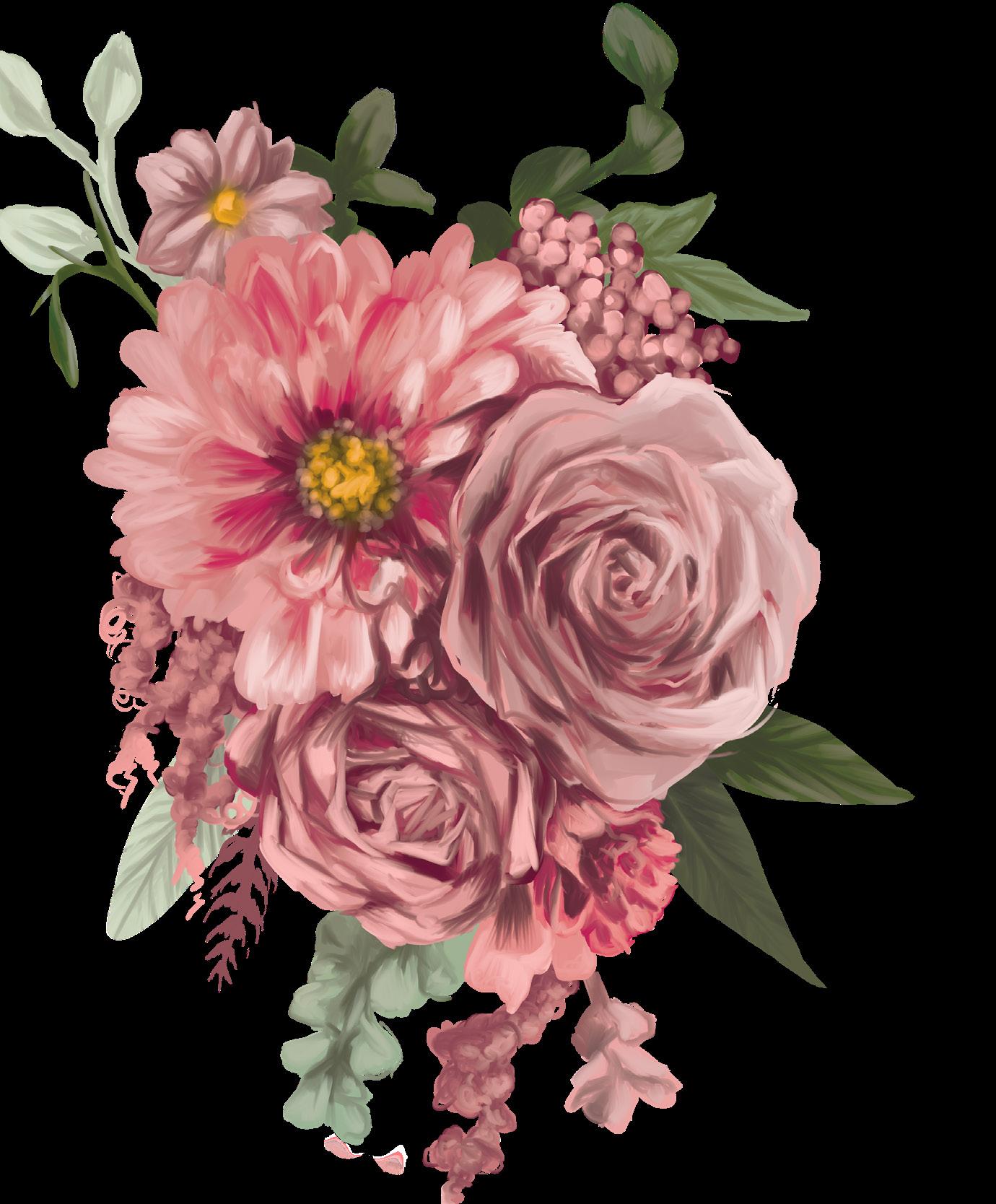
The Urdu/Hindi phrase “Log kya kahenge?” — or “What will people say?” — is a prominent social idea that other people will always have an opinion on a person’s life and decisions. This idea is especially important to South Asian women, particularly when it comes to a woman’s attire. Many of the expectations of modesty that are upheld by South Asian parents result from fear that their children, especially their daughters, will be judged for the modesty or immodesty of their outfits by the “aunties’’ and “uncles” of the community. But even women that strive for modesty still find their attires assessed, down to the very last detail.
A hijabi Bengali student, who chose to remain anonymous, expressed her struggles with appearing modest to the community. “I get so paranoid if my ankles are showing because my parents taught me that people will say stuff if you’re not modest enough. I think within South Asian culture too, it’s so hard to be modest and also adhere to South Asian culture specifically because people are so picky and nit-picky about everything.”
Even as a hijabi, a South Asian woman cannot hide from the prying scrutiny of “the community” and their everexacting measures of modesty. Hijabi and non-hijabi South Asian women alike find themselves covering up more in front of their community out of fear of judgment, scared to be seen as anything less than a perfect South Asian daughter.
However, with many South Asians assimilating to Western cultures, some South Asian American women are also scrutinized by other South Asians for being too conservative. The anonymous hijabi student detailed her own stories where other muslim bengali women questioned her decision to take the hijab, especially since she began at a young age.


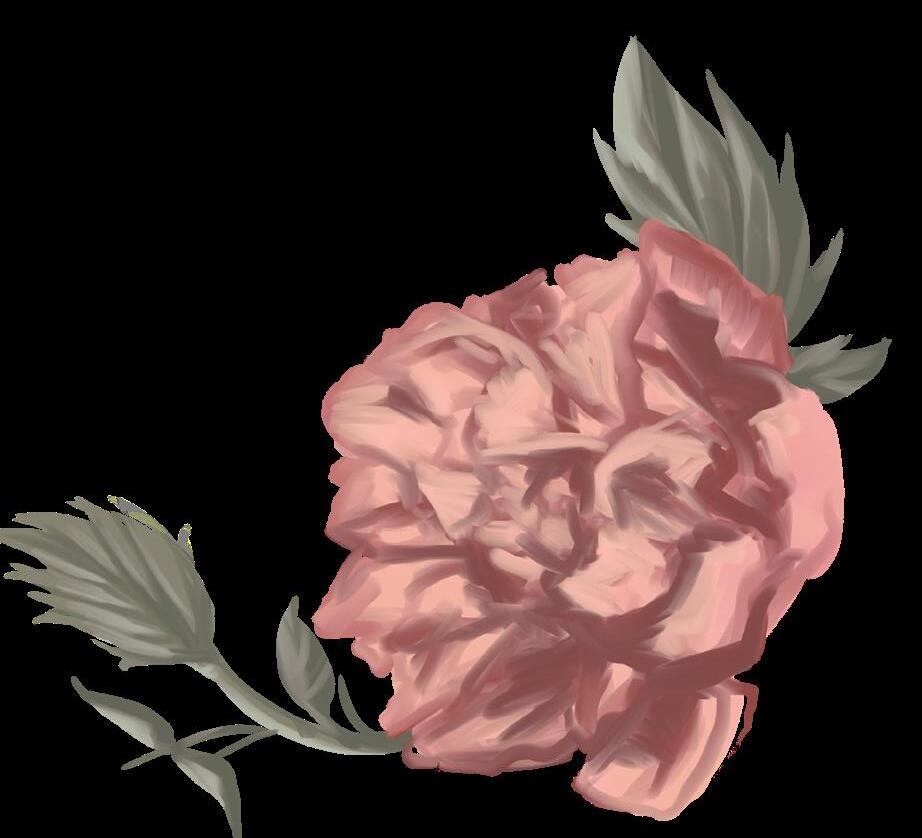


 written by/ Zainab Nawaz photos by/ Julia Lin design by/ Jennifer Jia models/ Zarin Ismail, Deshna Soni
written by/ Zainab Nawaz photos by/ Julia Lin design by/ Jennifer Jia models/ Zarin Ismail, Deshna Soni
30 | SPRING 2024
Modesty in Fashion
“Even as Bengalis, people would say, ‘You don’t have to wear the hijabi, you’re so young, live your life.’ I’d get comments like that and I never understood why.”
The misconception that dressing modestly means that a person is reserved or oppressed takes away the agency and individuality of choosing to dress modestly.
Despite growing up with a mixed culture of Eastern and Western values, the ebbing and flowing expectations for how modesty is defined hinders South Asian American women’s ability to explore their own relationships with fashion. Being perceived as too modest by some and not modest enough by others makes it difficult for women to exist in — or even define — a middle ground on the modesty
Modems of Modesty:
Trying to find pieces that are both stylish and modest in a Western society is easier said than done. With modern trends favoring more revealing styles such as crop tops and mesh fabrics, it can be hard for women to find items that fit their ideals of modesty. Because they don’t appeal to a niche audience, modest pieces also tend to be costly. These barriers in accessibility can make it more difficult for modest-dressing women to express their personal style.
Online shopping has alleviated some of the struggle of finding pieces that work. Digital retailers can supply wider varieties of styles and silhouettes, providing women more options to choose from. Modest dressers also implement layering to give revealing pieces more coverage and create more dynamic silhouettes with their outfits.
religion significantly influences culture, the average consumer still opts for modest pieces.
South Asian American women also turn to cultural clothing to express their modesty as the pieces are often already modest. Cultural fusion fashion pairing South Asian kurtas with American blue jeans or lehengas with Western tops allow women to express both modesty and culture. This mixed fashion has gained popularity due to social media and increasing South Asian representation in Hollywood.
Alternatively, Western media has also influenced how South Asian fashion brands portray modesty. The past decade has shown increased boldness in South Asian fashion, but in countries like Pakistan, where
Sobia Hamid, Business Head of Bridals and Couture for Maria B, discussed how interpretations of modesty differ between high fashion and mass market clothing in Pakistan. Elite, more niche brands have favored less modest designs, becoming more experimental and international with their looks. The mass market, however, has shifted towards more modest attire. “You see brands like Khaadi, Sapphire, Generation — bigger brands in Pakistan who are dominating the mass market — they have gone towards making sure their clothes and shoots are more modest. Out of their whole collections, maybe two outfits will be sleeveless. Otherwise, they’re all full sleeves.” Even on an industry level, the expression of modesty is subjective and ever-changing. Finding a personal style is hard enough with brands and media dictating the current trends. Dressing modestly presents its own challenges, but often to beautiful and stylish results. Whether one buys from more conservative brands or innovates upon modern trends, the potential for modest fashion is boundless.
South Asian American women will be judged no matter what they wear. Though that may deter some, the reality is that fashion provides an avenue of self-determination. Dressing the way they want and embracing their personal style means that South Asian American women get to be in charge of their own narrative. Be it modest, South Asian, Western or modern fashion, the confidence of feeling good in an outfit is one that no auntie or trend can take away.


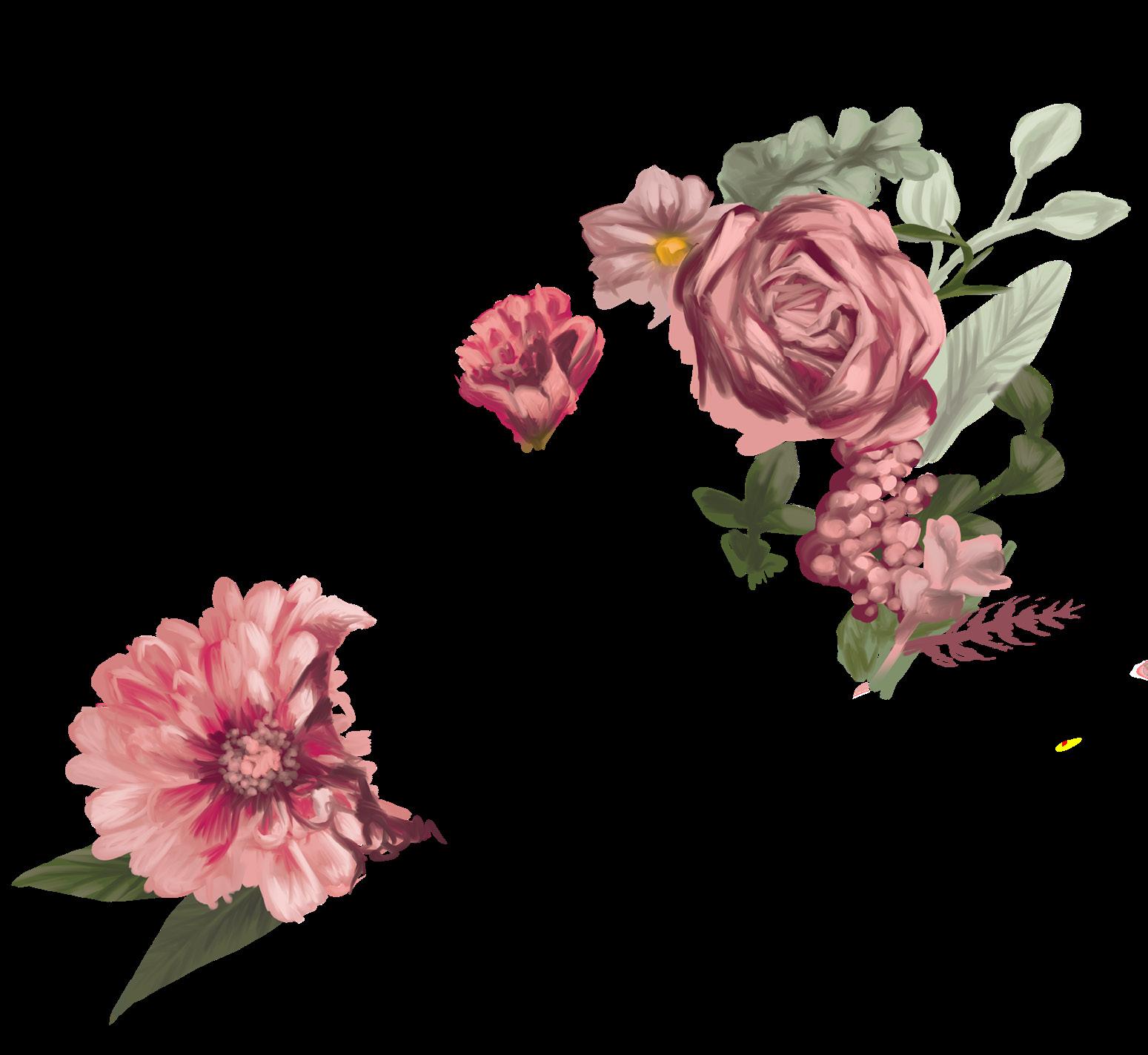


This story is by THE UNIVERSITY OF FLORIDA SPRING 2024 | 31


Seoul Seeker
A Travel Guide to Seoul, South Korea

White snow flurries swirl by as the train slowly rattles in. A child asks their parents if they’re there yet. Overhead, the train safety video featuring a man signing Korean Sign Language and the cast of “Pororo the Little Penguin” is playing on mute for the third time in a row. On the train speakers, “잠시 후 종착역인 서울역에 도착하겠습니다” rings out twice and is then repeated again in English, “We will soon be arriving at Seoul Station. The final destination of this train.” As the train pulls into the station, families can be seen scurrying about, hauling suitcases and children along. And people sit on the waiting area steps, clutching their iced americanos while carefully eating pastries. Everyone is bundled up in their thickest winter coats. A few brave the cold coatless for a few snow pictures. It’s winter in Seoul.
Traveling is a wonderful and exciting experience. There’s so much to do, so much to see and so much to learn about no matter where you go. Traveling to South Korea is no exception. If you ever get the opportunity to travel to South Korea, I would highly recommend it. The country not only offers beautiful scenery and delicious food, but the culture – both pop and traditional – is fascinating to learn about and experience. However, a vital portion of traveling is the planning phase. Who are you going with? How will you










it and informal speech has two different levels to it. In most situations, formal speech is the best choice. Listed below are some examples of common phrases and words that will


Hello - 안녕하세요 (an-nyong-ha-se-yo)
I’ll leave in good health* - 안녕히가세요 (annyong-hi-ga-se-yo)

*Used as a way to say goodbye
Thank you - 감사합니다 (gam-sa-hap-ni-da)
Yes* - 네 (ne)
*Yes is used as a response to thank you, so instead of saying you’re welcome say yes.
No - 아니요 (a-ni-yo)
Wait - 잠깐만요 (jam-kkan-man-yo)
Excuse me - 실례합니다 (sil-lye-hab-ni-da)
I’m sorry - 미안해요 (mi-an-hae-yo)
Restroom - 화장실 (hwa-jang-sil)
32 | SPRING 2024
by Liana Progar photography/Liana Progar design/Maliha Versi






With the help of technology, there are a few apps that will help you navigate better and overall make the trip more enjoyable.
Navigation apps:
KakaoMap or Naver Map are the best options for navigation. Google and Apple Maps will still work in Korea, but they may show fewer locations or be missing information. The main differences between the map apps are that KakaoMaps works better if you search in Hangul and Naver Maps will accept either and show better tracking for bus routes.

not be polite like we are Western cultures. Korea is a fast-paced and often crowded place; oftentimes if someone lightly bumps into you or brushes against you on the street or a subway, they will not say sorry. Minor incidents like this are

Kakao Taxi is the go-to taxi service in Korea with Uber, also known as UT, being a viable option. For Kakao Taxi you may need a Korean phone number to order a taxi. With Uber, you can use the same account as the one in America.
Translation app:
Papago is an absolute must. Papago is a more accurate translation app for Korean and people in Korea may ask to communicate with the app.
Delivery app:
If you’d like to order takeout, you can use the Shuttle app. The app is foreigner-friendly; the Live Chat monitors and the drivers know English.

There are a few important cultural differences you should know before landing in Korea. The most important difference is that you do not tip in Korea. Tipping may come off as rude, instead be sure to be extra polite and thankful. A part of being polite is bowing to others. While you do not need to use a 90-degree bow in most situations, a deep incline







case the bathroom isn’t supplied with toilet paper. You must hold your trash until you can find a trash can or trash pile.
Overall, Korea is a very safe country to travel in; the theft rate is low. People generally leave their items unattended in public places and if a lost item is found, it will be left there for its owner to reclaim. Additionally, if you’re walking home after dark, no one will bother you.
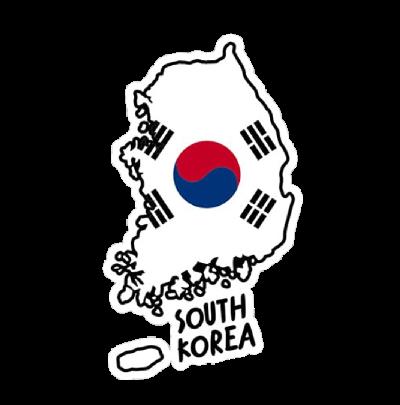


Regarding what kind of money to bring, depending on the strength of the U.S. dollar at the time, it might be more beneficial for you to exchange U.S. dollars for South Korean won in the U.S., especially if your bank doesn’t charge you a conversion fee. In case you run out of South Korean won, be sure to bring some U.S. dollars to convert. I personally exchanged $300 and needed to convert a little more cash in Korea, so it’s better to convert slightly more than you think you need. Especially if you’re not planning to use a debit or credit card while in Korea. When using cards, you may have to pay a currency exchange rate. Alternatively, there are temporary card companies, such as Wow Pass and Namane, that enable travelers to convert their currency to South Korean won on cards for a fee. Furthermore, as a U.S. citizen, you should keep your passport on you at all times. Not only does it work as a form of identification, but it also will help you apply for tax exemptions at certain stores like Olive Young.

SPRING 2024 | 33






Deciding between using international data or a Korean SIM card can be difficult. Your cell phone provider might offer a good deal for international call, text, and data, however, there are benefits to using a SIM card. Having a SIM card with calling capabilities will make certain activities easier. If you’d like to attend a concert, order a taxi, or confirm texted access codes for apps, having a Korean phone number is highly beneficial. Korea has wifi everywhere, so you can also travel with wifi only or data only.

and the subway stations. To refill your card at a subway station, you will need cash smaller than 50,000 South Korean won. Convenience stores also require South Korean won to refill Tmoney cards.
It’s important to note that there is a difference between trains and subway trains in Korea. Trains are the above ground, long distance transportation option. The trains travel to cities like 부산 (bu-san) or 대구 (dae-gu), and even the demilitarized zone (DMZ). Whereas the subway trains stop in smaller intervals and travel mostly below ground around 서울 (se-oul).
If you take a bus or a subway train in Korea, there are a few rules you should follow.
- There are designated elderly and pregnant seats, often color-coded, so do not sit in those seats unless you are elderly or pregnant.
- All bags should be worn in front of your body to keep the walkway clear.
- You cannot share Tmoney cards, each individual must tap on and off the bus/ train.
- You should not play audio loudly from your phone.

And finally, baggage. When deciding what to bring, first think about what you want to do in Korea. If you want to shop and bring home more clothes, pack lighter. I highly recommend bringing a checked and a personal bag on the way to Korea and then returning with a checked, carry-on, and personal bag. Luggage is decently cheap in Korea, so you can save a little money and hassle on the way there and ensure you have enough space for all your goodies to make it back home.
Travel & Transportation
Now the next step: getting to Korea. When booking your flight, carefully choose which season you want to visit during. Korean summers can be very warm, spring has cherry blossoms, fall is crisp, and winter can bring heavy snowfall. Do your research on the conditions for each season, whether it be monsoon season or a blizzard, it’s important to be prepared. There will be a lot of stairs and hills to climb, so if you’re traveling in a wet or snowy season, make sure to pack the correct shoes. No matter if your flight crosses the Pacific Ocean or flies over Europe, the journey will be long and tiring, so be sure to stretch. To help reduce jet lag, it’s best to try and sync your sleep schedule with


In Korea there are four main ways of traveling: you can take a train, bus, taxi or you can walk. You will need a Tmoney card to use subways and buses. You can get Tmoney cards 인천 (incheon) airport gives you a free Tmoney card if you buy their SIM card, otherwise, convenience stores and some retail stores like ARTBOX will carry Tmoney cards. Some taxis do accept Tmoney as a payment method, but know that taxis are very expensive in Korea. Tmoney cards may be refilled at almost any convenience store


- Don’t speak loudly on public transportation.
- When using an escalator, stay on the right side if you want to stand, and use the left side if you want to walk up.
Accommodations


For living accommodations, you can stay in a hotel or Airbnb. The price difference between the two depends on when you’re traveling and the quality of the establishment. If you choose to stay at an Airbnb, beware that Korea has no division between the shower and the rest of the bathroom, so when you shower the whole room may become wet. On the other hand, hotels have adopted the Western style of bathroom, especially business hotels, which may have the shower divided from the rest of bathroom. With booking hotels, especially more popular or business hotels, there is a higher chance that hotel receptionists will know English. With Airbnbs, the hosts’ profiles will state if they know English.




Food & Drinks
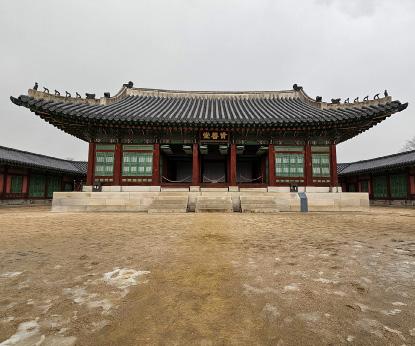



When picking a location to stay at, consider the surrounding area. Staying close to a subway stop or a bus stop is convenient and cuts down on travel time. Picking a location towards the heart of Seoul or your chosen city may be more expensive; however, the ease of access to activities and stores is a great benefit.
Korea has many different delicious foods to try. Within Korea, there are many different cuisine types available due to all the different cultural crossovers. I would suggest trying to eat a different food for each meal. You can sample



34 | SPRING 2024



many different foods from street food vendors for a low cost. Street food vendors often only accept cash, so be sure to save a little bit of pocket money for these delicious snacks.
Suggested foods and drinks to try:
- Bibimbap (Rice bowl)
- Tteokbokki (Spicy rice cakes)
- Bulgogi (Marinated beef)
- Samgyeopsal (Pork belly)
- Japchae (Glass noodles)
- Korean BBQ
- Korean Fried Chicken
- Korean Corn Dog







- Kimbap (Seaweed rice vegetable roll, similar to sushi but no raw meat)
- Kimchi-jjigae (Kimchi soup)
- Jajangmyeon (Korean Chinese hybrid black bean noodles)
- Jjamppong (Korean Chinese hybrid seafood soup)

- Eomukguk (Fish cake soup)

- Bogeo-iritang (Pufferfish soup)
- Baked goods (Breads, pastries, etc.)
- Bungeo-ppang (Fish shaped pastry)
- Screw Bar Ice Cream






- Melona Ice Cream
- Samanco Ice Cream



- Chilsung Cider (a soda similar to Sprite)
- Fruit Ade drinks (sparkling water with fruit chunks of choice)
- Korean coffee
Sightseeing

There are many beautiful sights to see in South Korea. Between locations filled with culture, the natural landscape of the country, and pop culture spots, you will have no shortage of places to visit.
A must-see for historical and culture lovers is Gyeongbokgung Palace or Changgyeonggung Palace. At these palaces, you can walk the grounds of these historical sites and learn about the purpose of the various buildings. At Gyeongbokgung you can see the changing of the guards ceremony and learn more history as it is the larger palace. Changgyeonggung is smaller, but less busy. This palace is the better choice if you want to have a photoshoot. Between the two palaces, there is Bukchon Hanok Village. This village is a popular tourist spot as it has restored traditional houses, hanoks, that were once owned by nobility or high-ranking government officials


see traditional performances, and enjoy a bite to eat while overlooking all of Seoul. Another must-see is the Han River. You can walk or bike along one of the longest rivers in Korea, and stop at the various restaurants and parks all while taking in the wonderful city view. In Namsan Park, Bukhansan National Park, or any of the various parks in Korea, you can enjoy the local flora and fauna while walking through numerous hiking trails. Whether taking in the city or exploring the wilderness, Korea has many beautiful sites to offer.
If you enjoy sports, you can walk around the Olympic Park originally built for the 1988 Summer Olympics, or visit the Seoul World Cup Stadium built for the 2002 FIFA World Cup. At the Seoul World Cup Stadium, you can purchase tickets for a stadium tour or you can see the small soccer museum inside dedicated to Korea’s soccer history and art inspired by FC Seoul and its players.
Activities
Korea is jam-packed with thousands of possible activities to do. When planning your trip, think about things you’d like to do. Would you be more interested in do-it-yourself activities? Do you prefer shopping? Or would you rather find a relaxing pastime? I







SPRING 2024 | 35






- Daiso (Many various items, like Target without the food)


that allows you to take photos with idols.
Relaxing/health and wellness activities are also extremely popular. Oftentimes the procedures or sessions will be cheaper than in America. The Korean beauty industry offers many options to appeal to anything a person might need.
- Spa/Bathhouse
- Skincare treatments
- Photoshoot - Sanho Mansion, Blue Bird Studio, Cool Captures
- Hair cut
- Eyeglasses/contacts
- Personal color - Diod
Wallets beware, there are many shops with enticing items inside. From stationery to sporting goods, the stores of Korea have it all. I would highly recommend shopping around the underground markets and malls, frequently attached to subway lines, as they often have the cheapest prices and most interesting finds. The same goes for the basement-level stores on the streets, while the prices might not be as low as underground markets, they definitely are cheaper and more varied than surface-level stores. A heads up if you do visit a mall, most of the time the first floor will be filled with all the luxury brands with the less expensive stores on the upper or lower floors. Furthermore, beauty and skincare salespeople at any store, anywhere WILL try to sell you anything they can as fast as they can.
- 동대문 (dong-dae-mun) Bead and Craft Market on the 5th floor (Art supplies and DIY shops)
- Artbox (Art, stationary, accessories)


- AK Plaza - The top floor of this mall is entirely dedicated to anime. And there’s also a WITHMUU store in the mall for all

seoul street (Unisex urban street-style clothing)
(myeong-dong) the most. The area had a lot of variety in stores, restaurants and street food vendors. It can be a very crowded area and difficult As a K-Pop fan, traveling to Korea



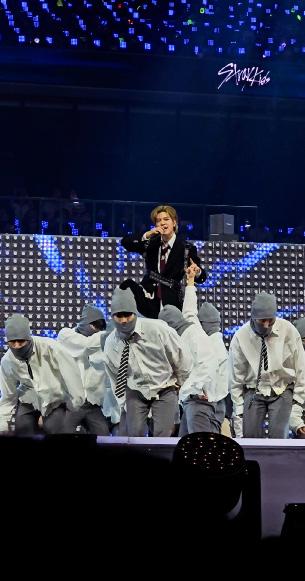


36 | SPRING 2024







can be a great opportunity to buy harder-to-find items and see artists perform live. There are a few different activities that you can see your favorite group at such as:
- Weekly music shows (Inkygayo, Music Bank, The Show, Show Champion, M Countdown, Show! Music Core – You will need a ticket and possibly a
- Concerts and festivals (You will need a ticket and possibly
MBC Idol Radio filmings
I personally got to see the 2023 SBS 가요대전 (ga-yo dae-jeon). It was a very exciting experience, but also very stressful. Before you book concert tickets, plan how you will return to your accommodations. Korean concerts average four hours for just the performances, so public transportation may not be available by the time the concert ends. If the concert is in Incheon, you will most likely need to book a hotel there. The closer the venue is to Seoul the easier it will be to return via public transportation. When booking concert tickets you can either try buying them yourself which can be very difficult without a Korean phone number, Korean bank account, a fanclub membership, or a good handle on the Korean language (ticketing sites are not foreigner-friendly). Or you can purchase them through foreign-friendly resale sites like Trazy, Kstairway, Kkday and Creatrip. The resale sites will be more expensive, but they do make it easier to buy the tickets and they know English. Once you make it past planning the transportation and securing the tickets, seeing the show is a lot of fun. Keep in mind that Korean fans have different concert etiquette and behavior than international fans. You cheer during certain parts of the song, you only sing the fan chants and there should be no lightsticks or banners above your head.
Other notable excursions in South Korea are having fun at one of their two amusement parks, Lotte World or Everland (make sure to buy a cute headband there too), and singing your heart out in a private karaoke room, a 노래방 (no-rae-bang). A popular and affordable noraebang is Su Noraebang.
In the end, this was a once-in-a-lifetime trip and I’m incredibly grateful I had the opportunity to enjoy what Korea had to offer. On this trip, things went wrong, things went right and they were unforgettable all the same. I would like to give a special shoutout to Bear Seoul for helping me make some of the best gifts ever, Banji Cafe for allowing me to make five different rings, street seoul for supplying me with the comfiest hoodie I’ve ever owned, Movement and One Of for dancing through the bitter cold, making our last day in Korea memorable and finally, to Kstairway’s Danny for the SBS Gayo Daejeon tickets, you were a lifesaver.




Beyond concerts and festivals, you can visit various K-Pop stores across Seoul. There are multiple in Myeongdong and there are various locations that host lucky draw and popup events such as Everline, Soundwave and M2U Record. If you happen to visit during an idol’s birthday or a group’s anniversary certain cafes will host cupsleeve events, perfect for a refreshing drink and a cute photo opportunity.

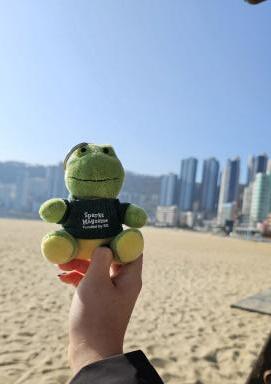

An absolute must for any K-Pop fan is watching the various busking groups in buskers perform the current hits and see how they add their own dance style to established choreography. We got to see two groups busk, Movement and One Of, and even with it being freezing, they hypnotized the audience with their performance. I would recommend for anyone, K-Pop fan or not, to stop and watch a busking team or two. Busking is heavily ingrained in the Korean entertainment industry, you could witness the rise of a new idol or the next big choreographer.






SPRING 2024 | 37
MAKING OF ISSUE 26
MY LOVE LETTER TO THE ORLANDO ASIAN COMMUNITY photography/Jenna Ho





COVERS models/ Takuya Avvampato • Bea Baldonado • Ava Dennison • Caitlyn Mari Koerner • Abbey Miller • Kathryn Powell photography/Norah Layne • Liana Progar 38 | SPRING 2024

A NEW LOOK ON THE PALESTINIAN-ISRAELI CRISIS
photography/Anonymous Advocate


A DIFFERENT CANVAS
models/Caitlin Nguyen • Courtney Nguyen photography/Ryan Baez • Olivia Kondraschow
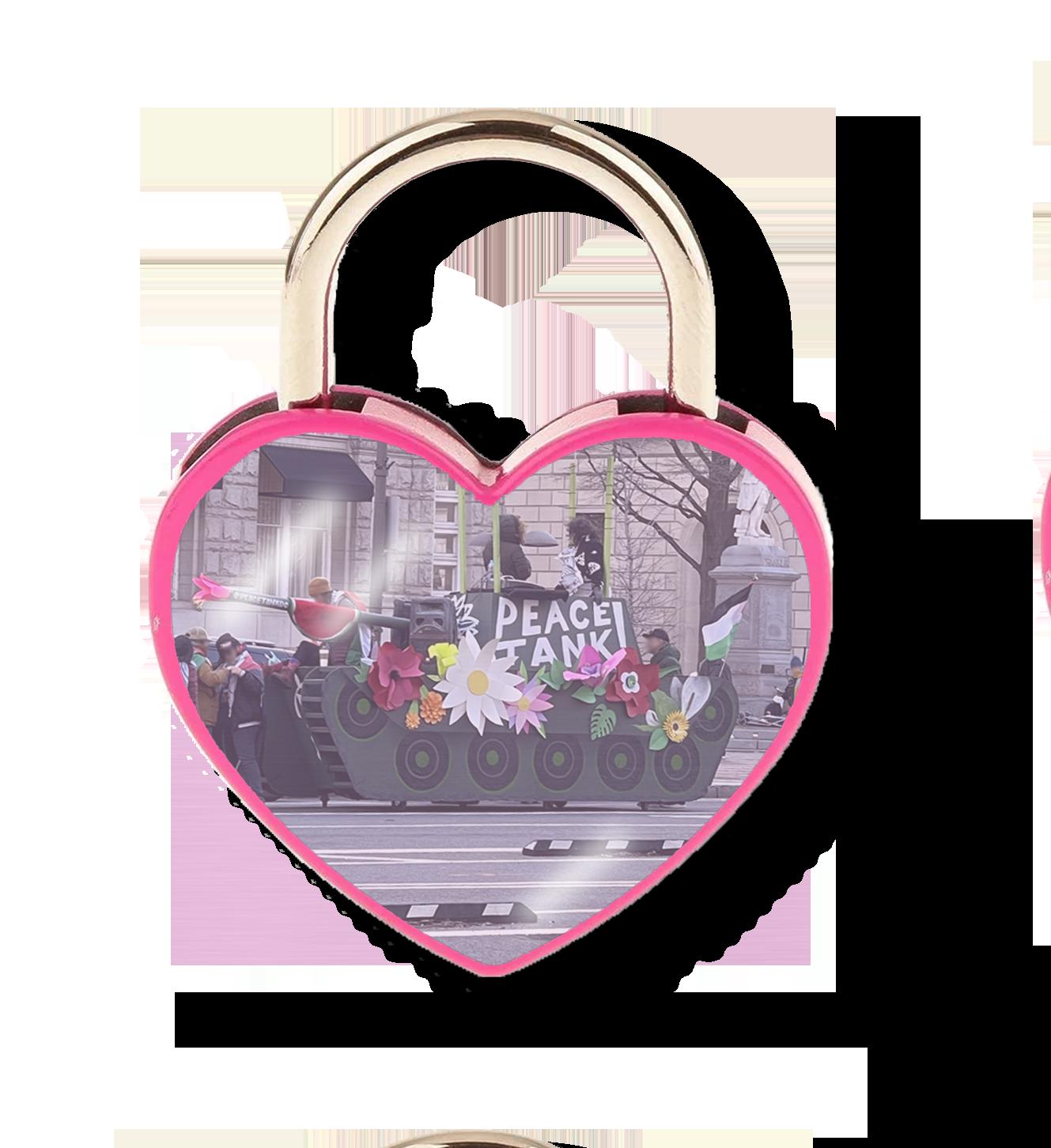



SEOUL SEEKER
photography/Liana Progar
SPRING 2024 | 39




























 by Monique Toon photography/Olivia Kondraschow and Ryan Baez design/Maliha Versi
by Monique Toon photography/Olivia Kondraschow and Ryan Baez design/Maliha Versi













































 by Reagan Huynh
design/Daniela Kate Abaquita
by Reagan Huynh
design/Daniela Kate Abaquita
































































 written by/ Zainab Nawaz photos by/ Julia Lin design by/ Jennifer Jia models/ Zarin Ismail, Deshna Soni
written by/ Zainab Nawaz photos by/ Julia Lin design by/ Jennifer Jia models/ Zarin Ismail, Deshna Soni















































































